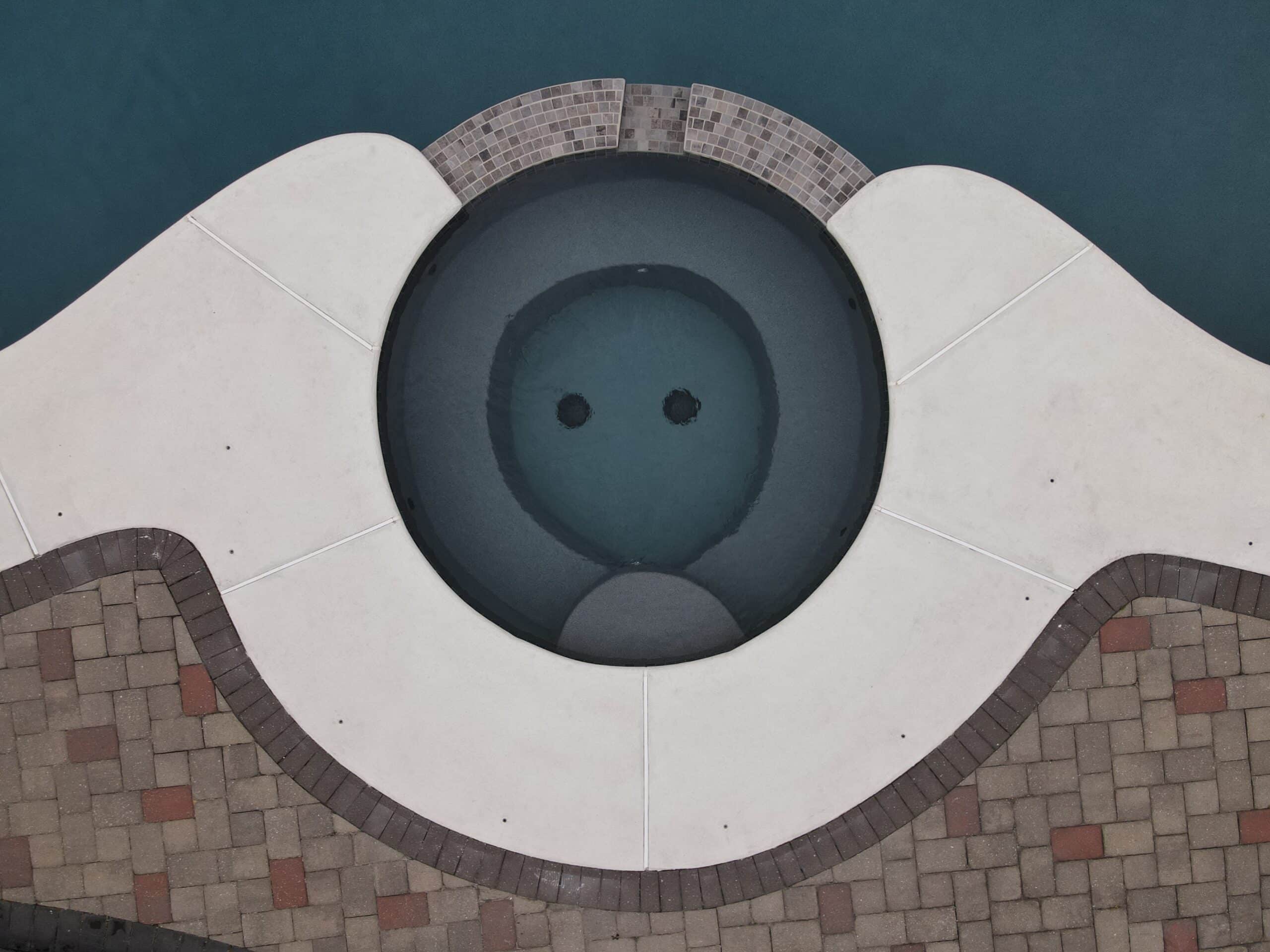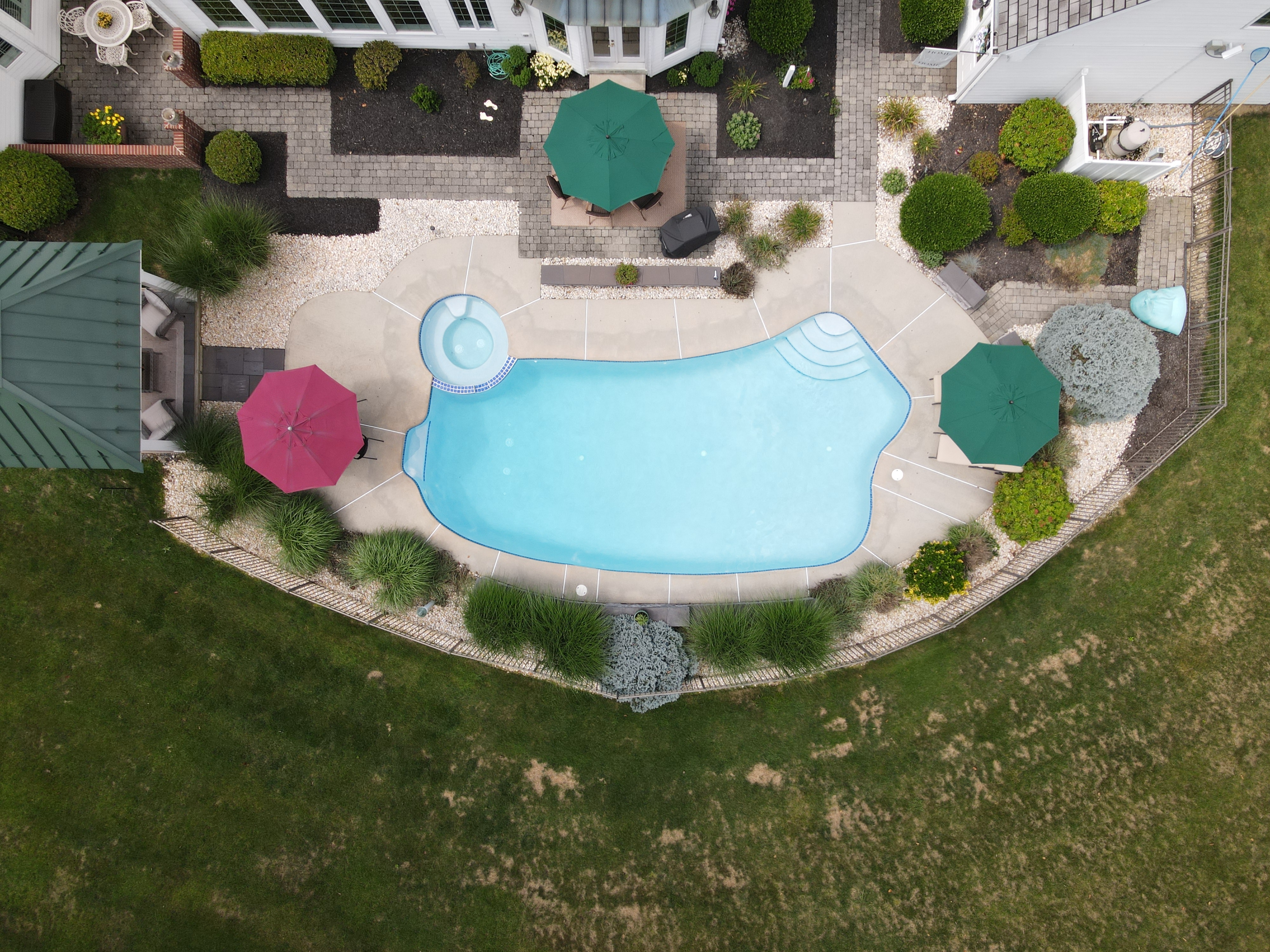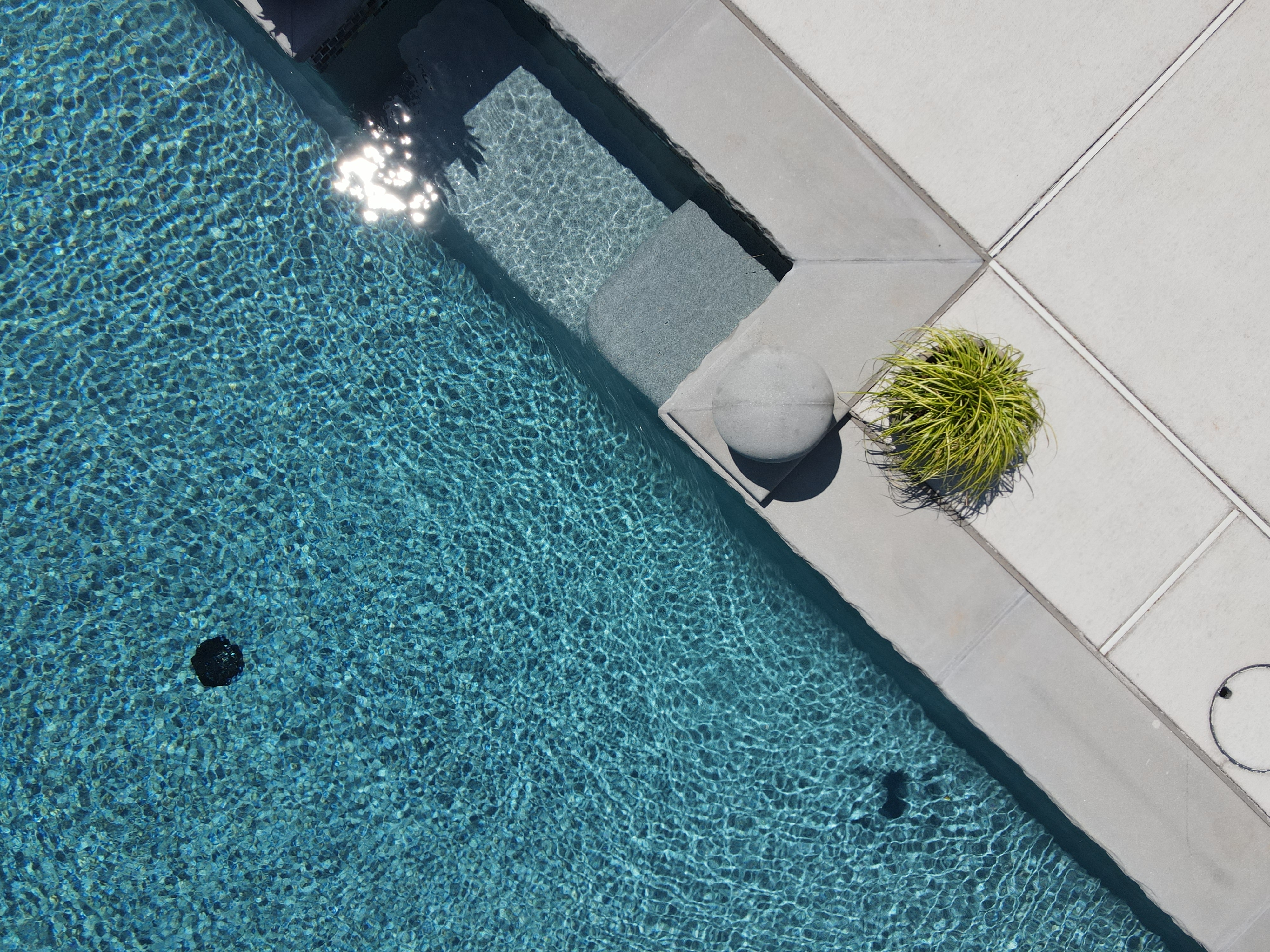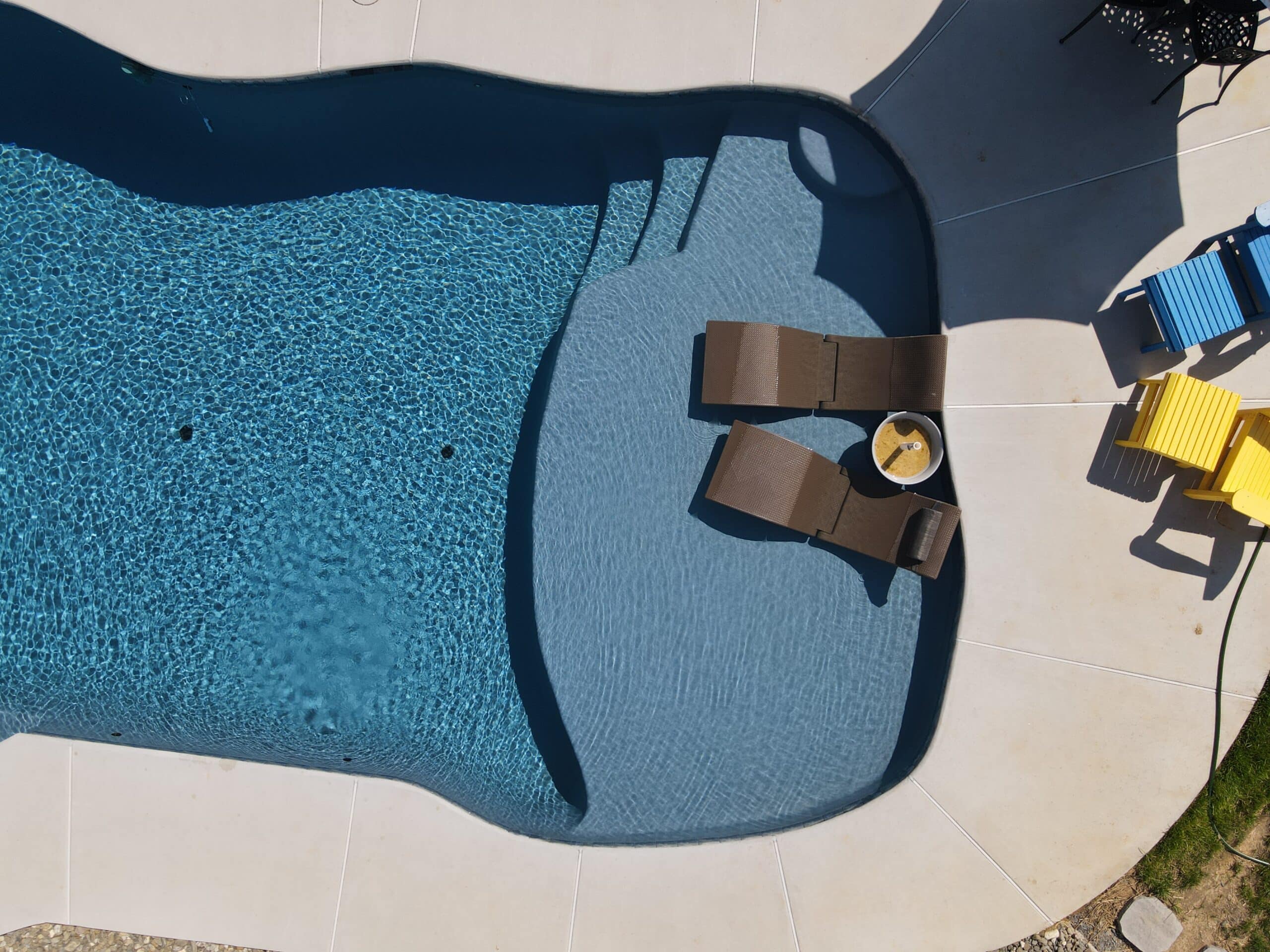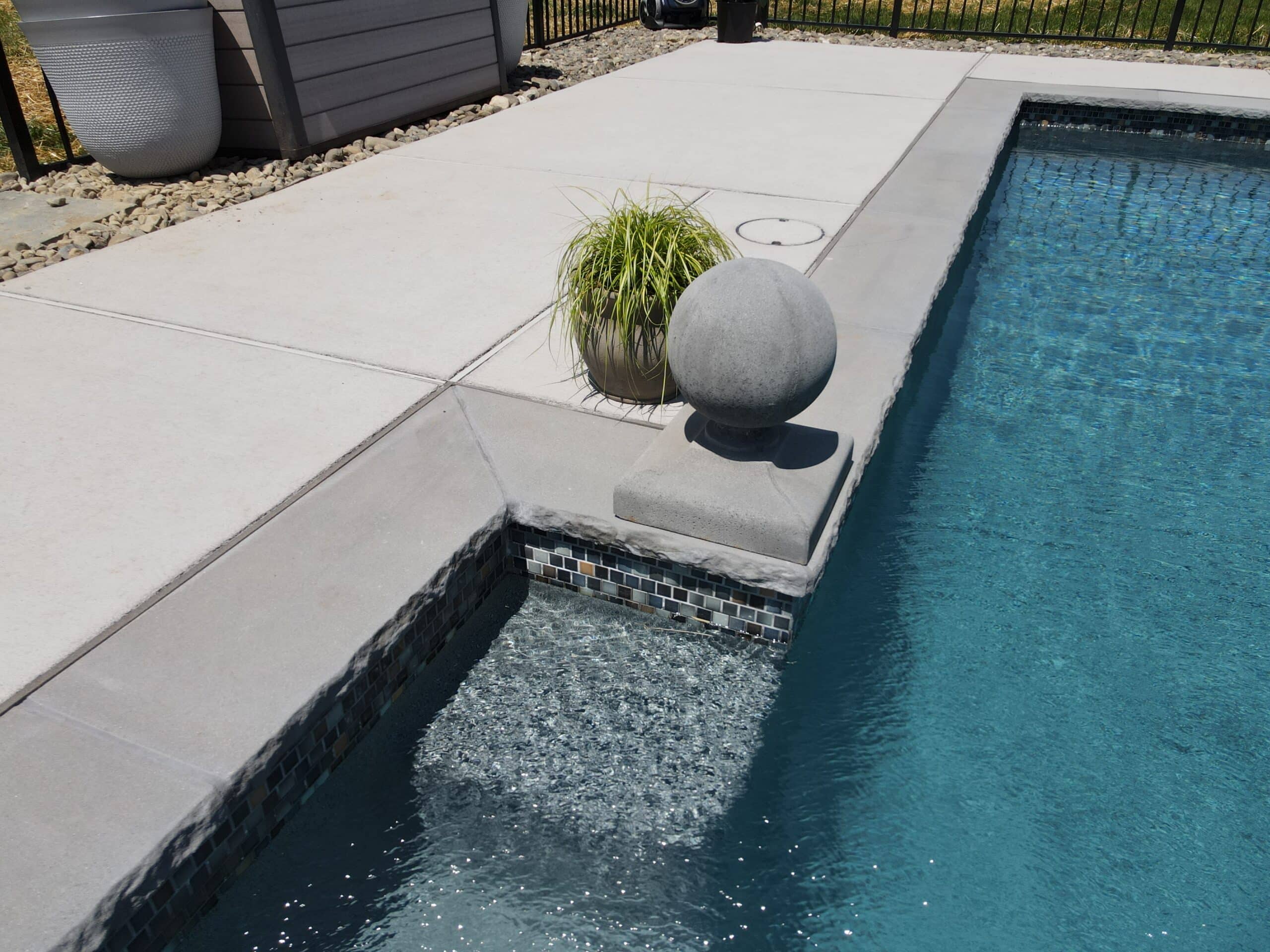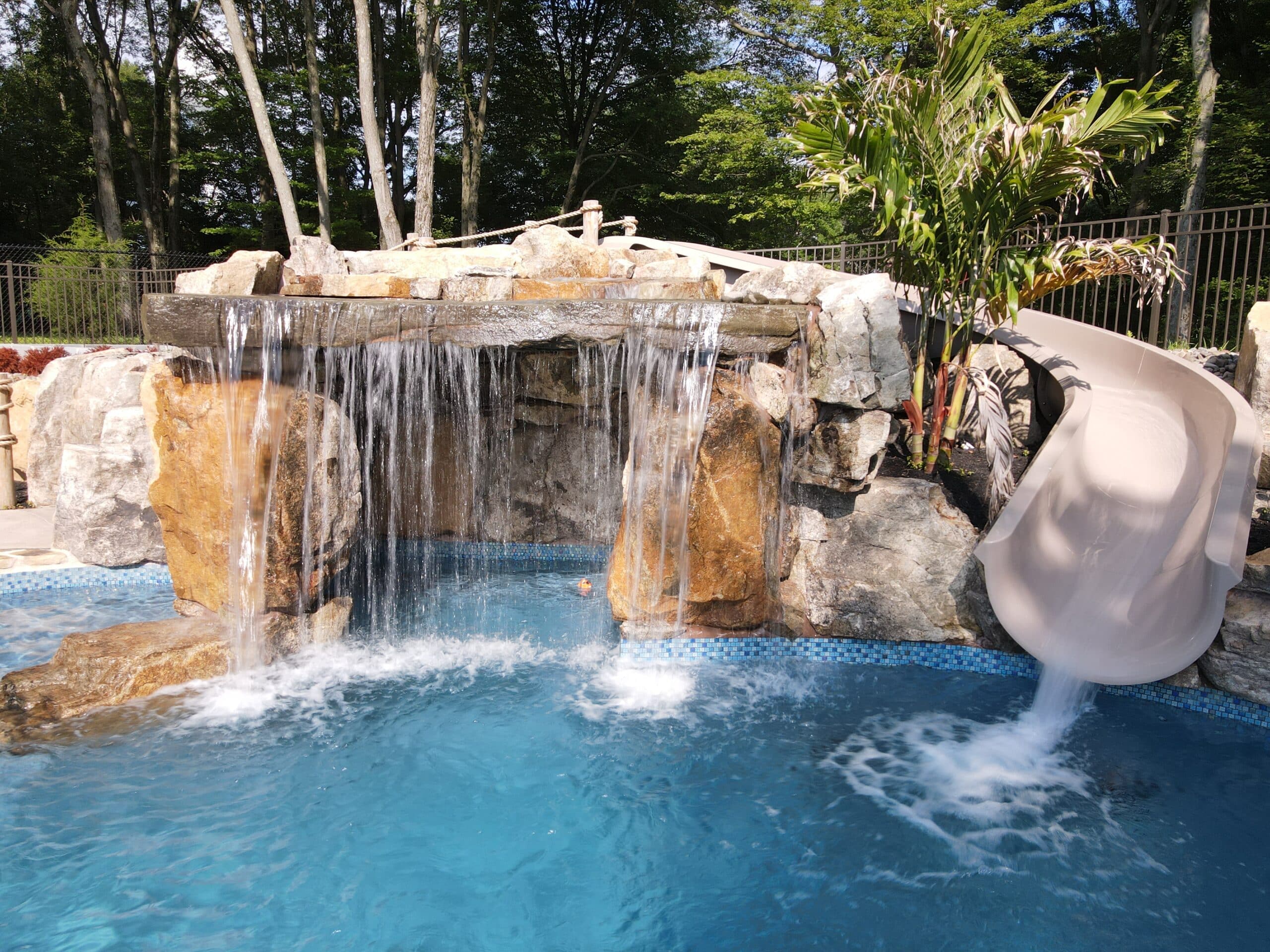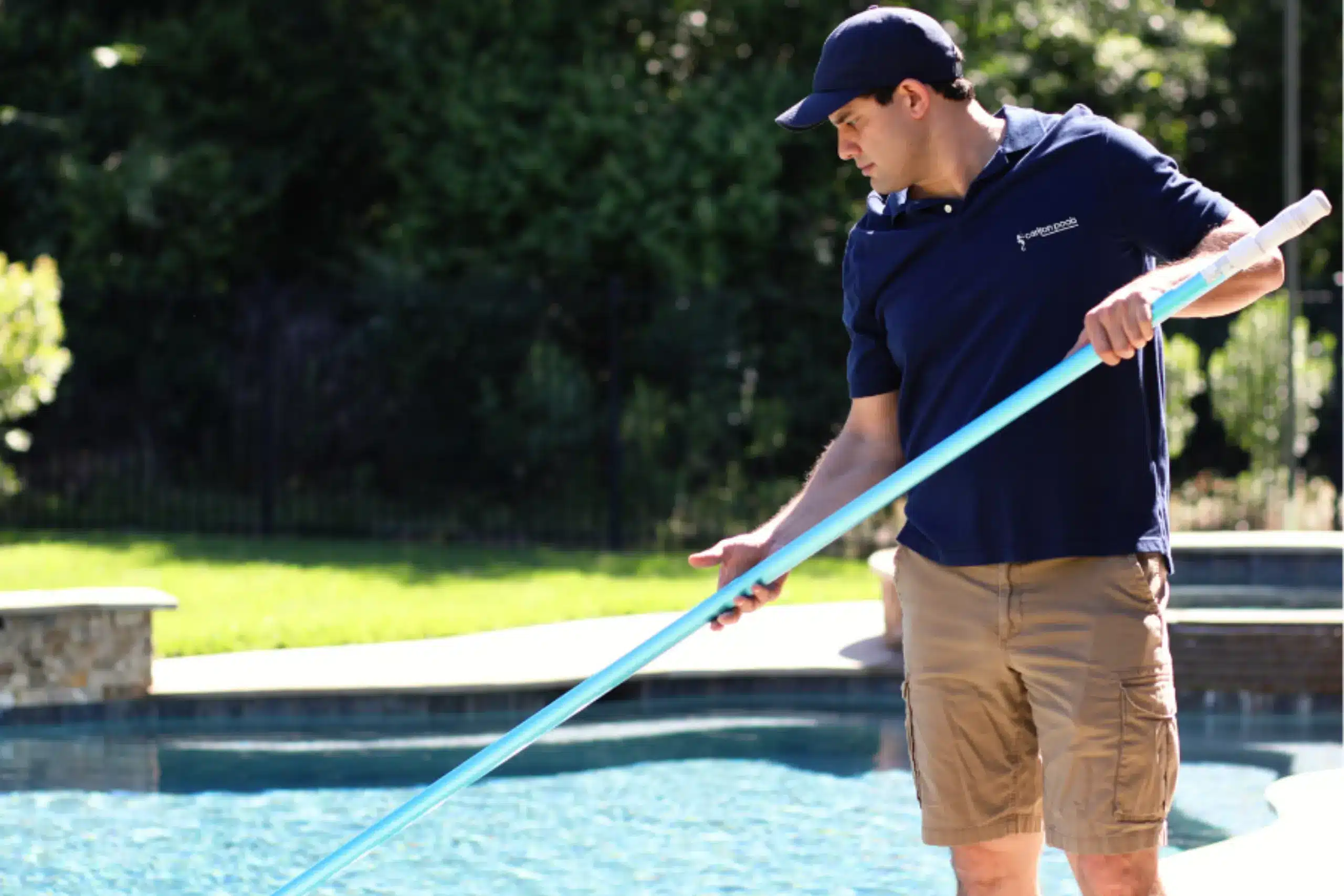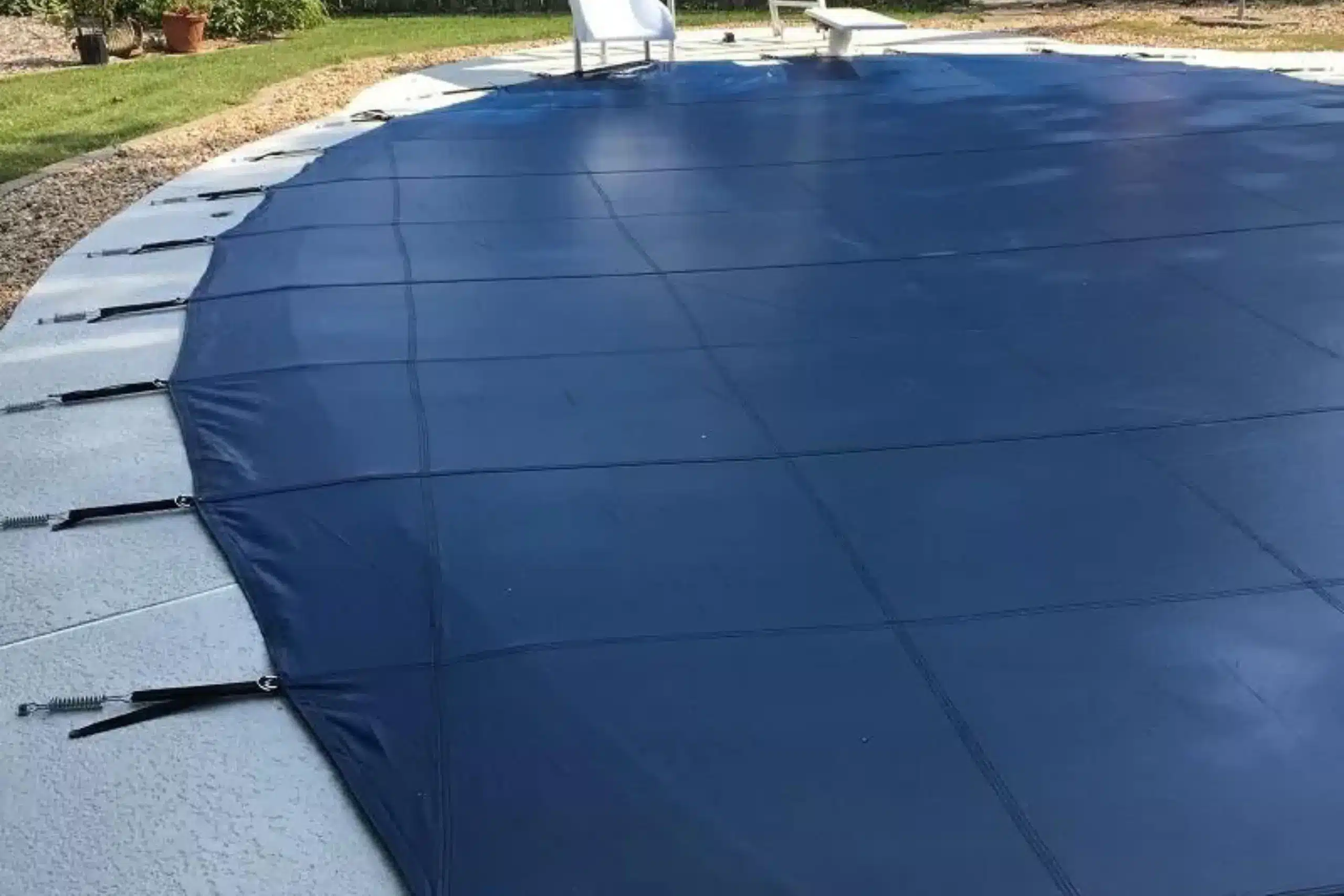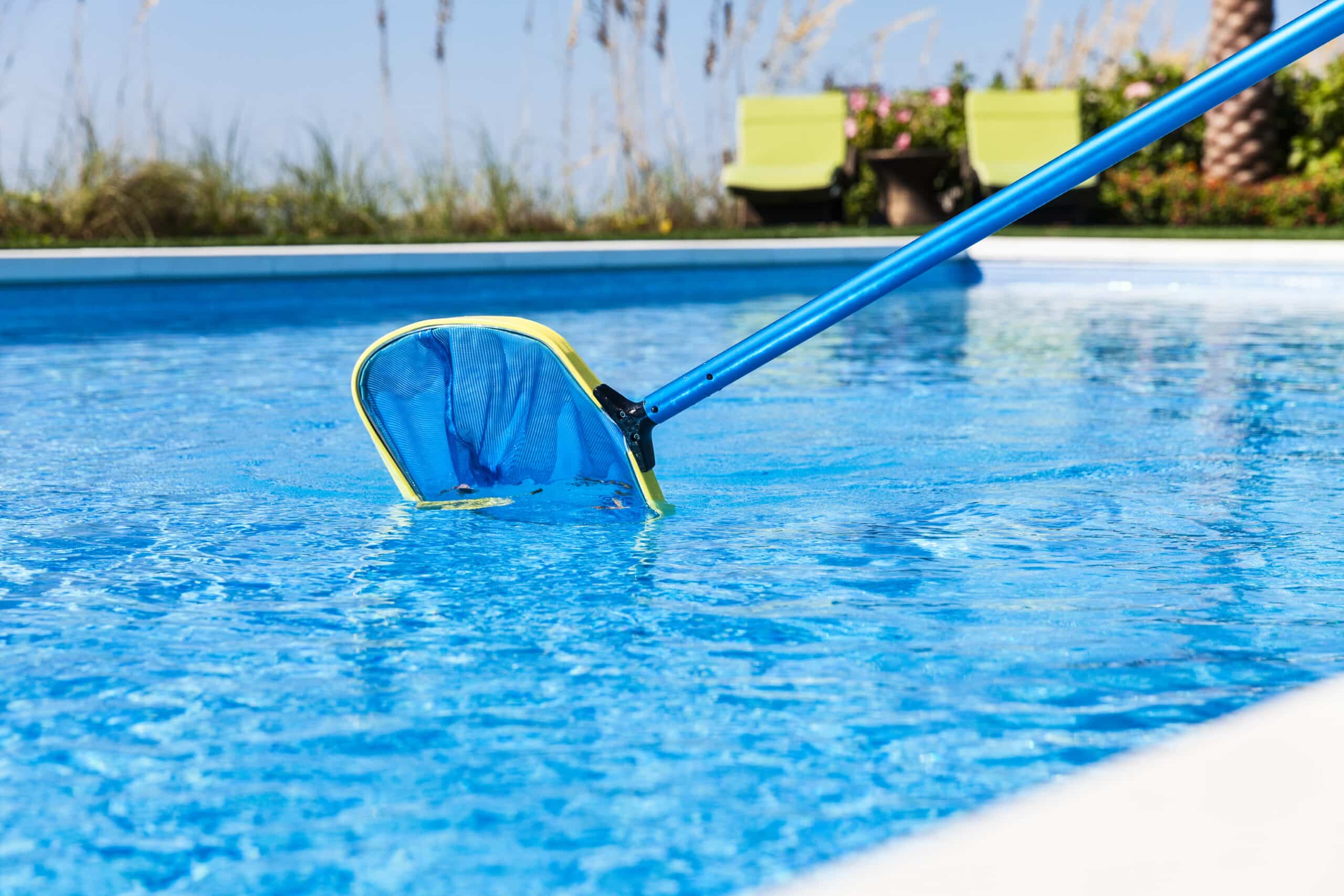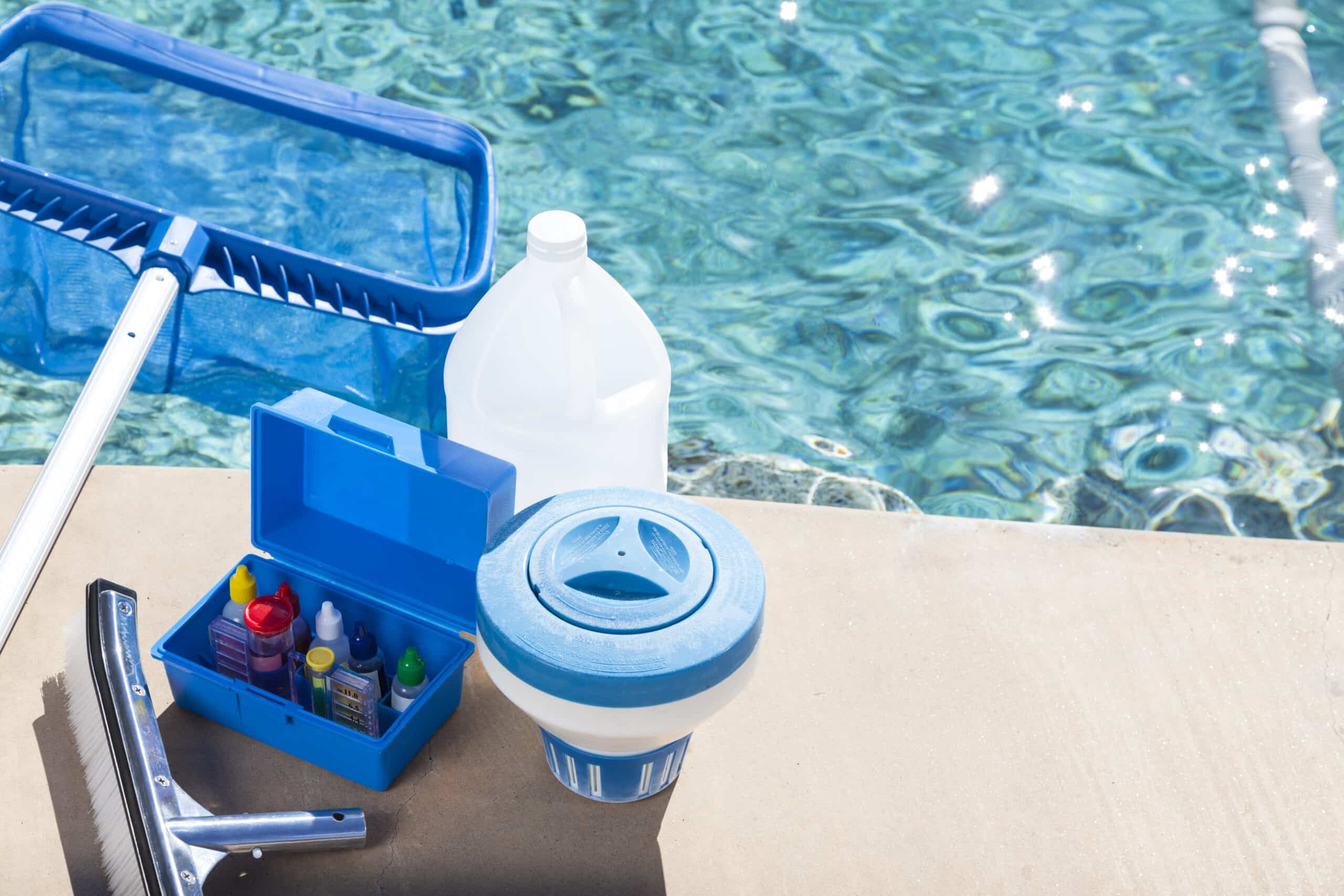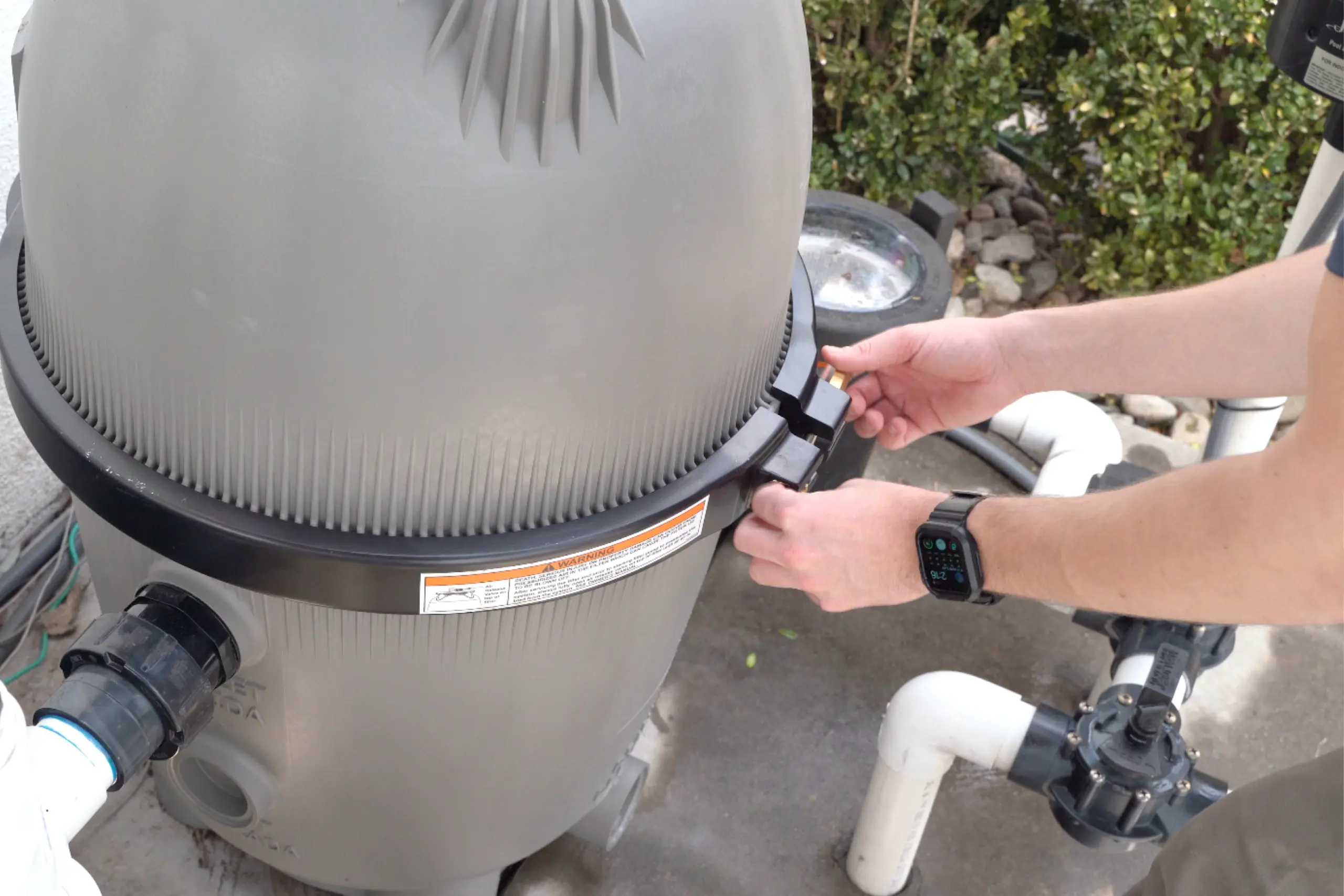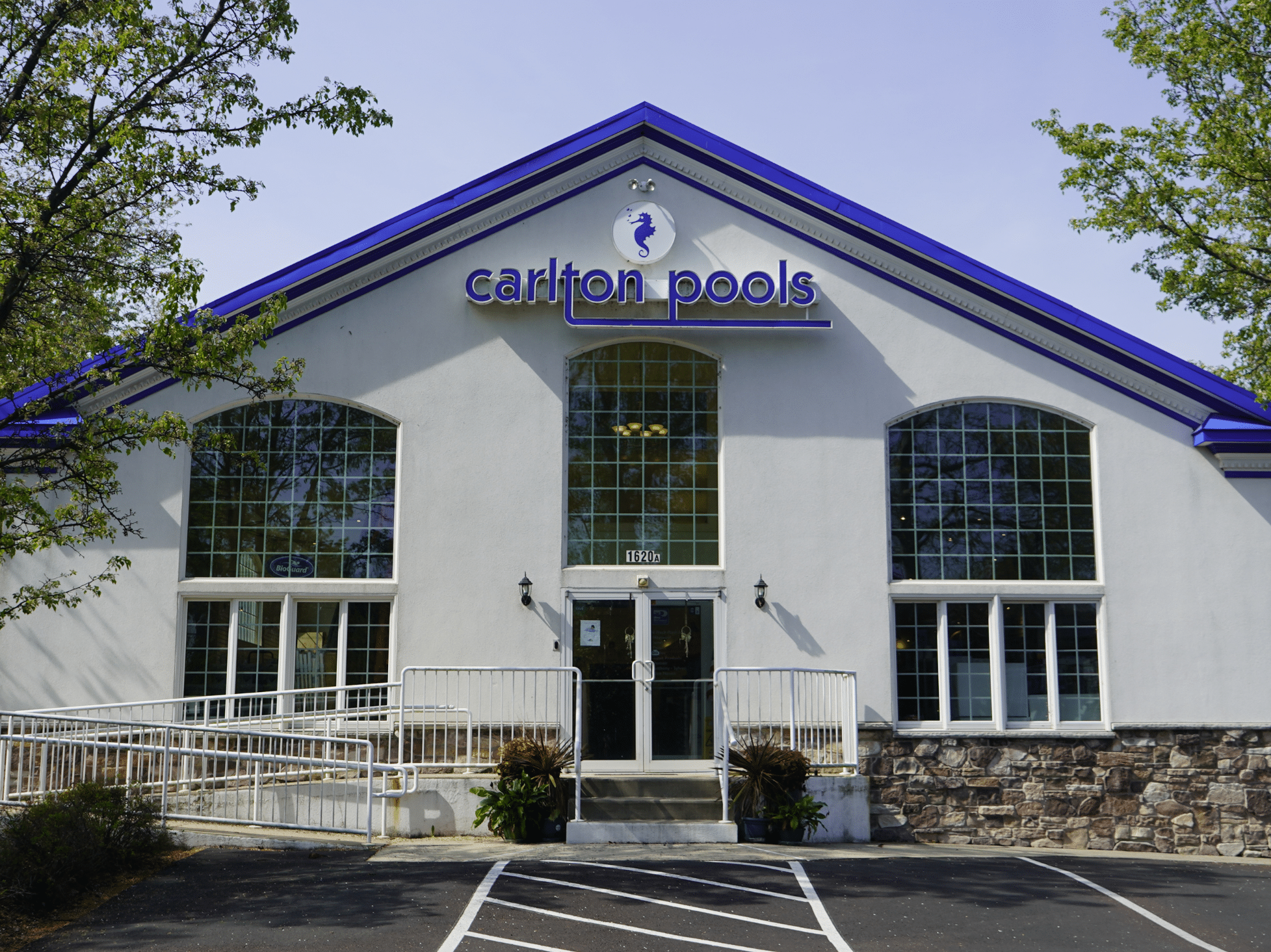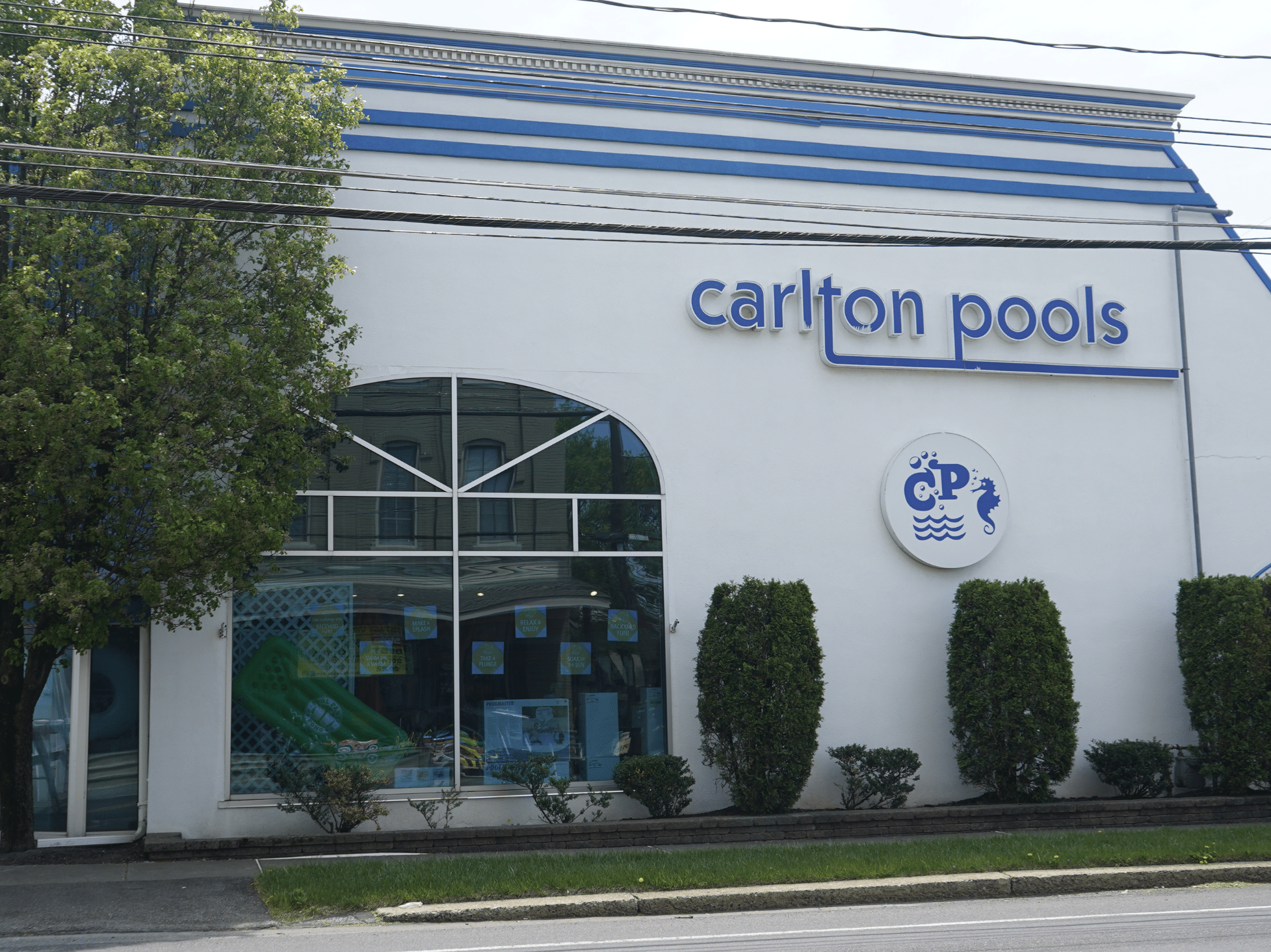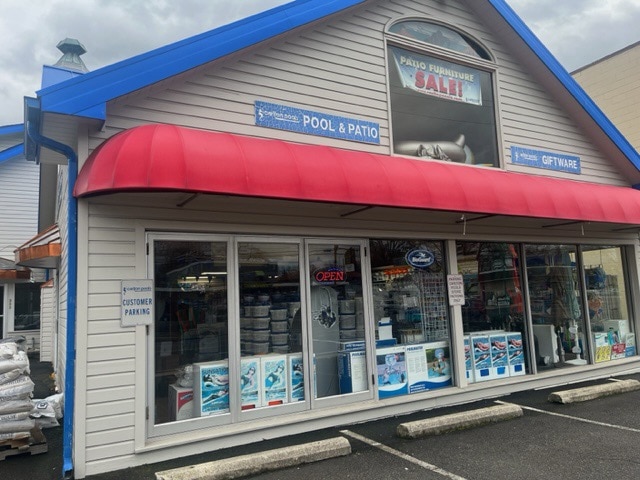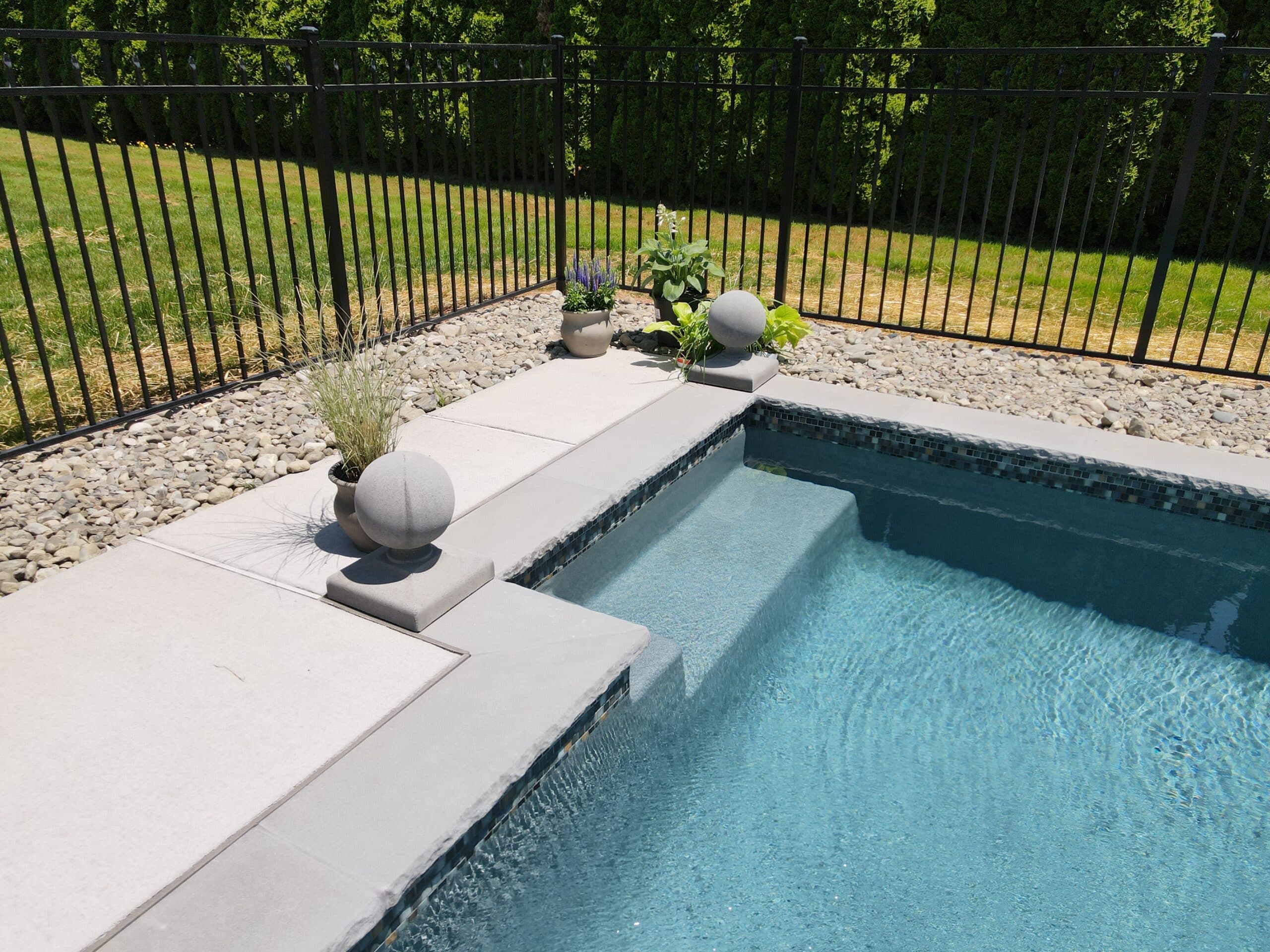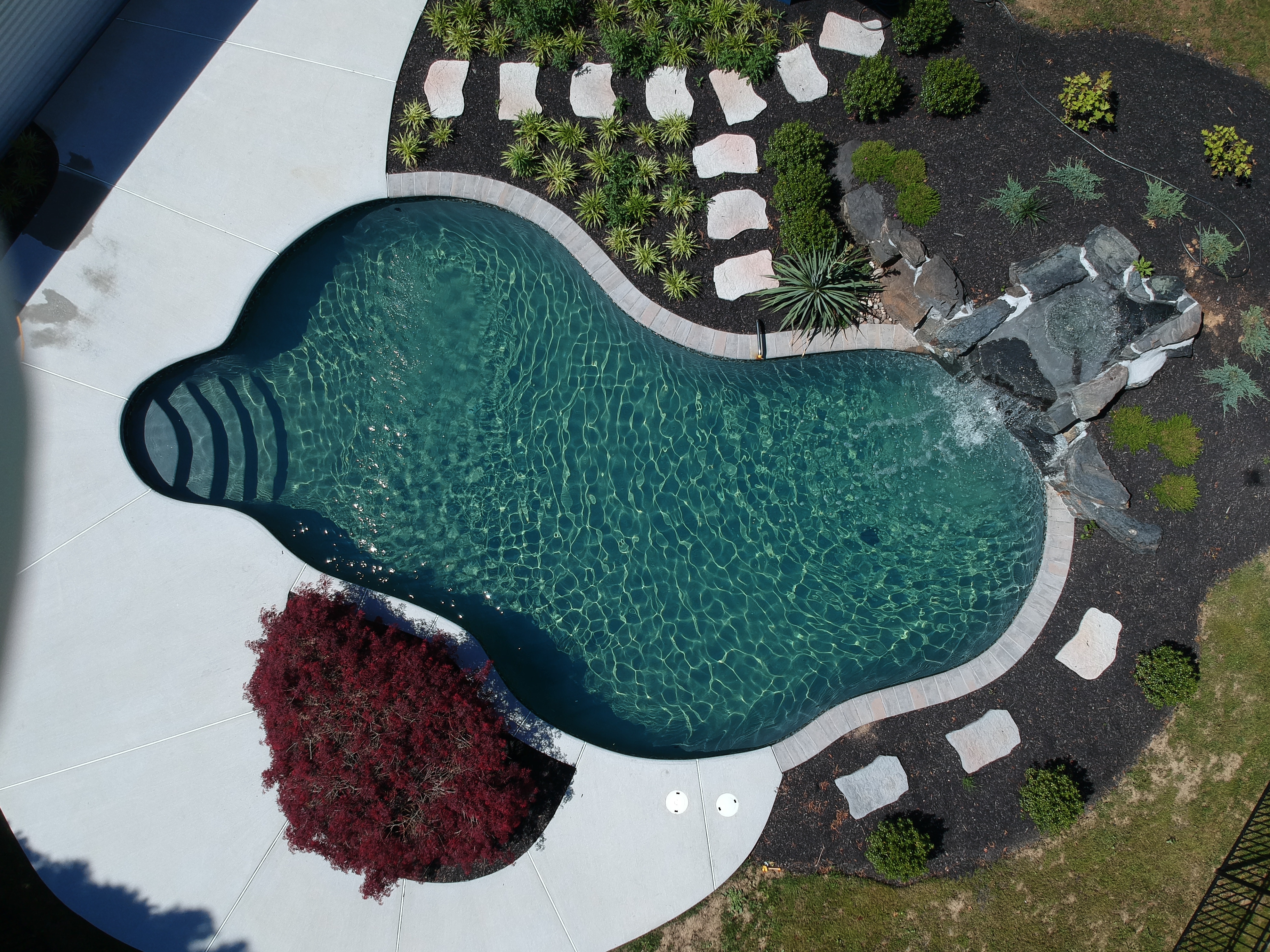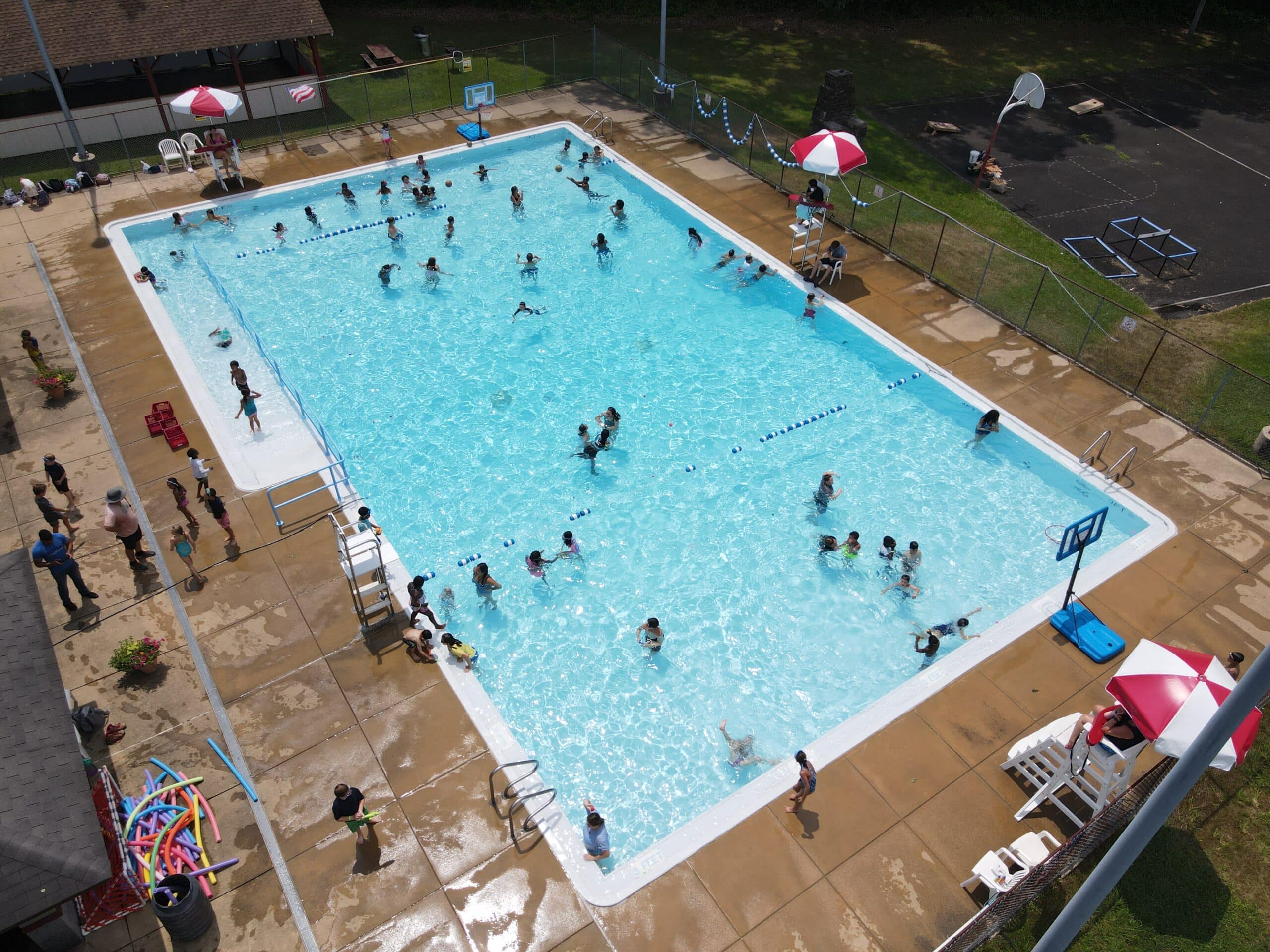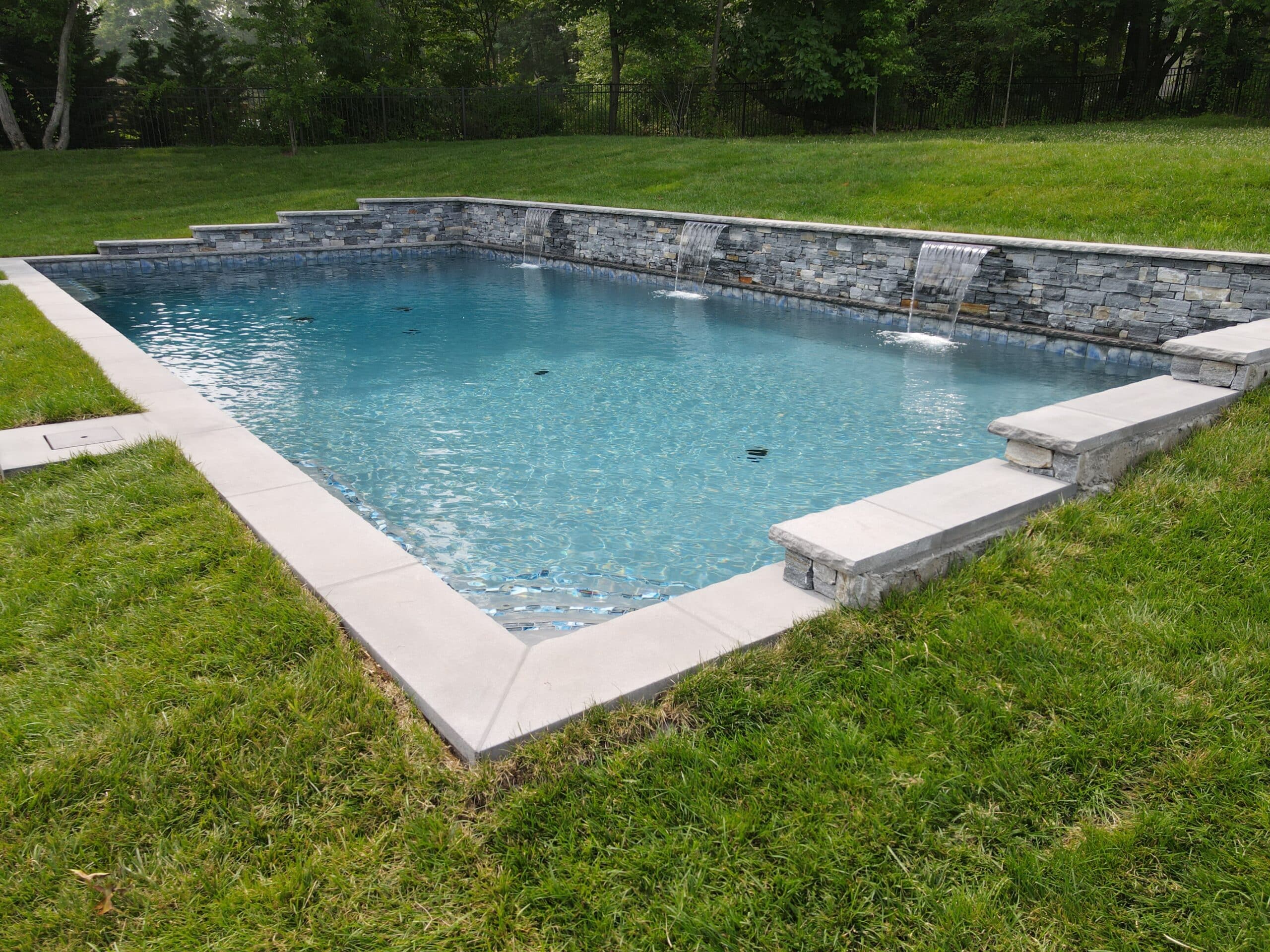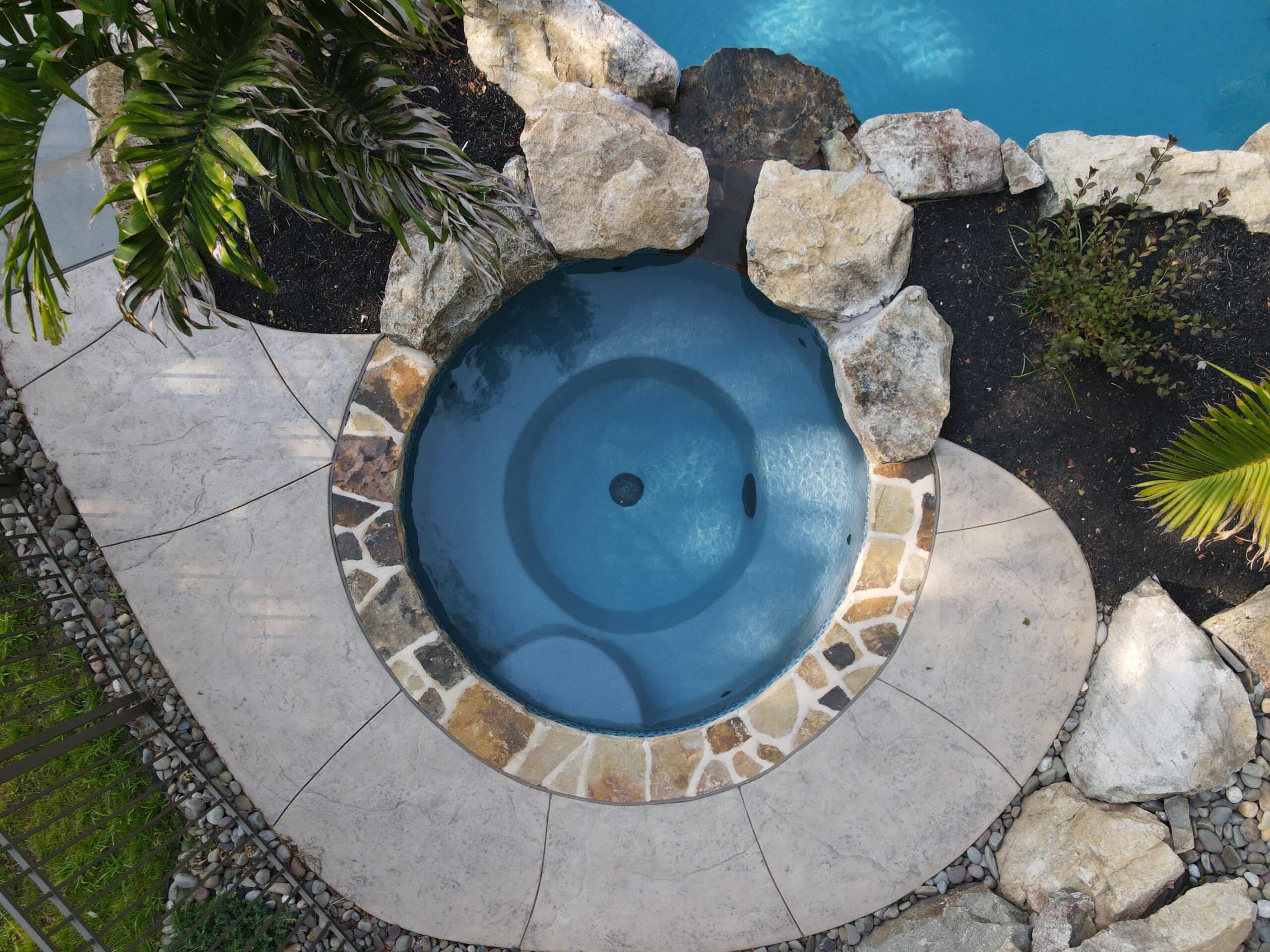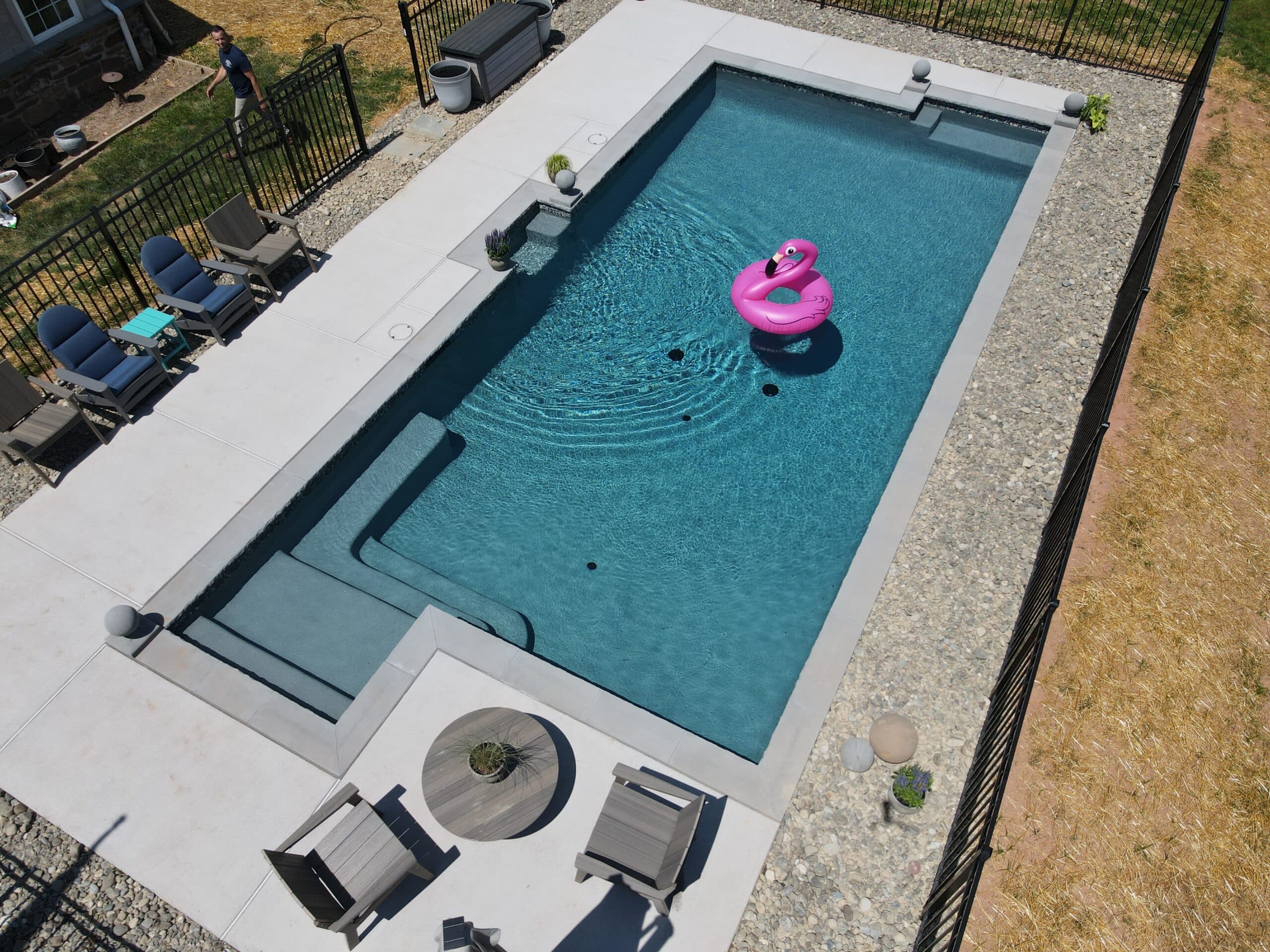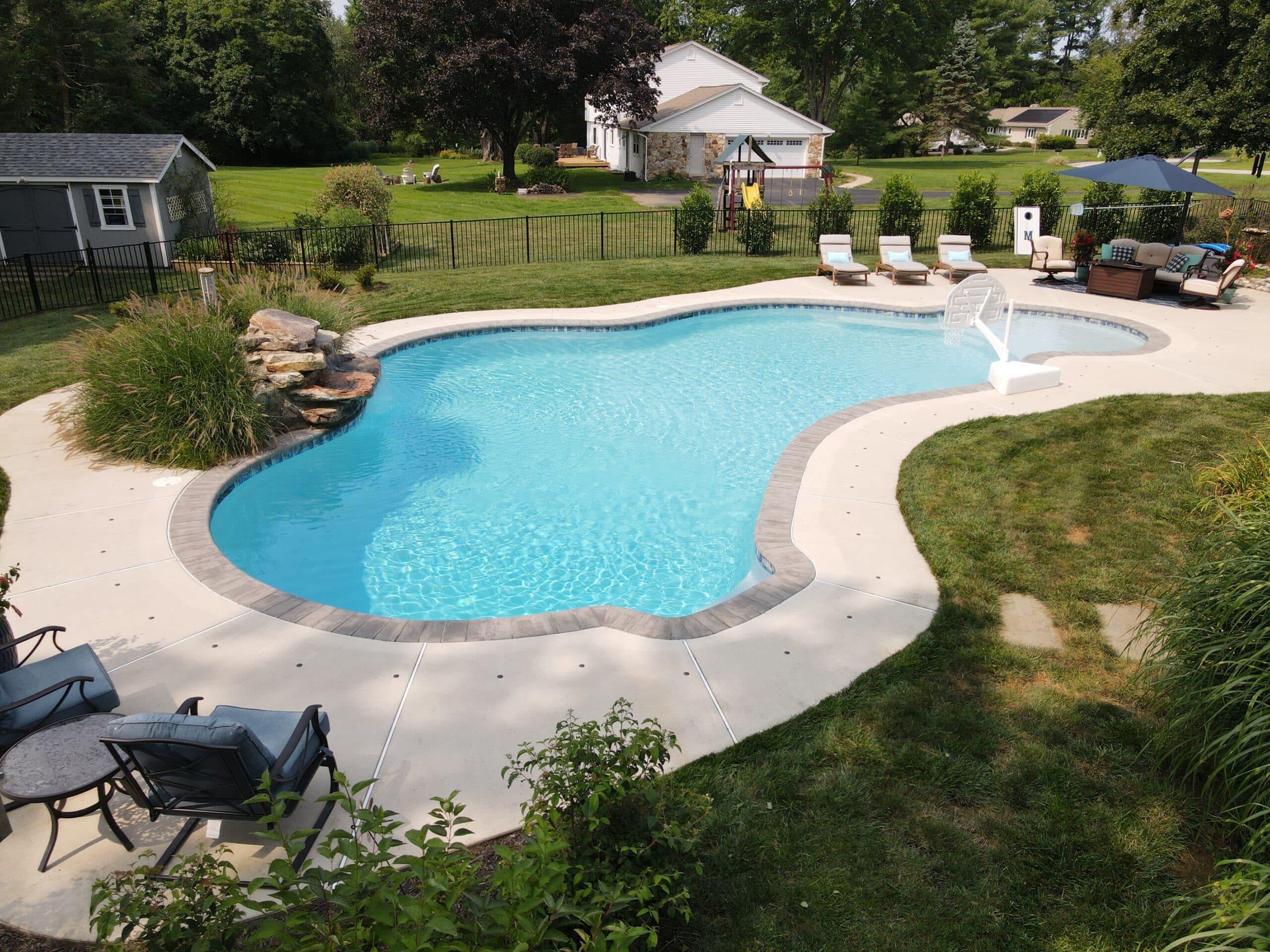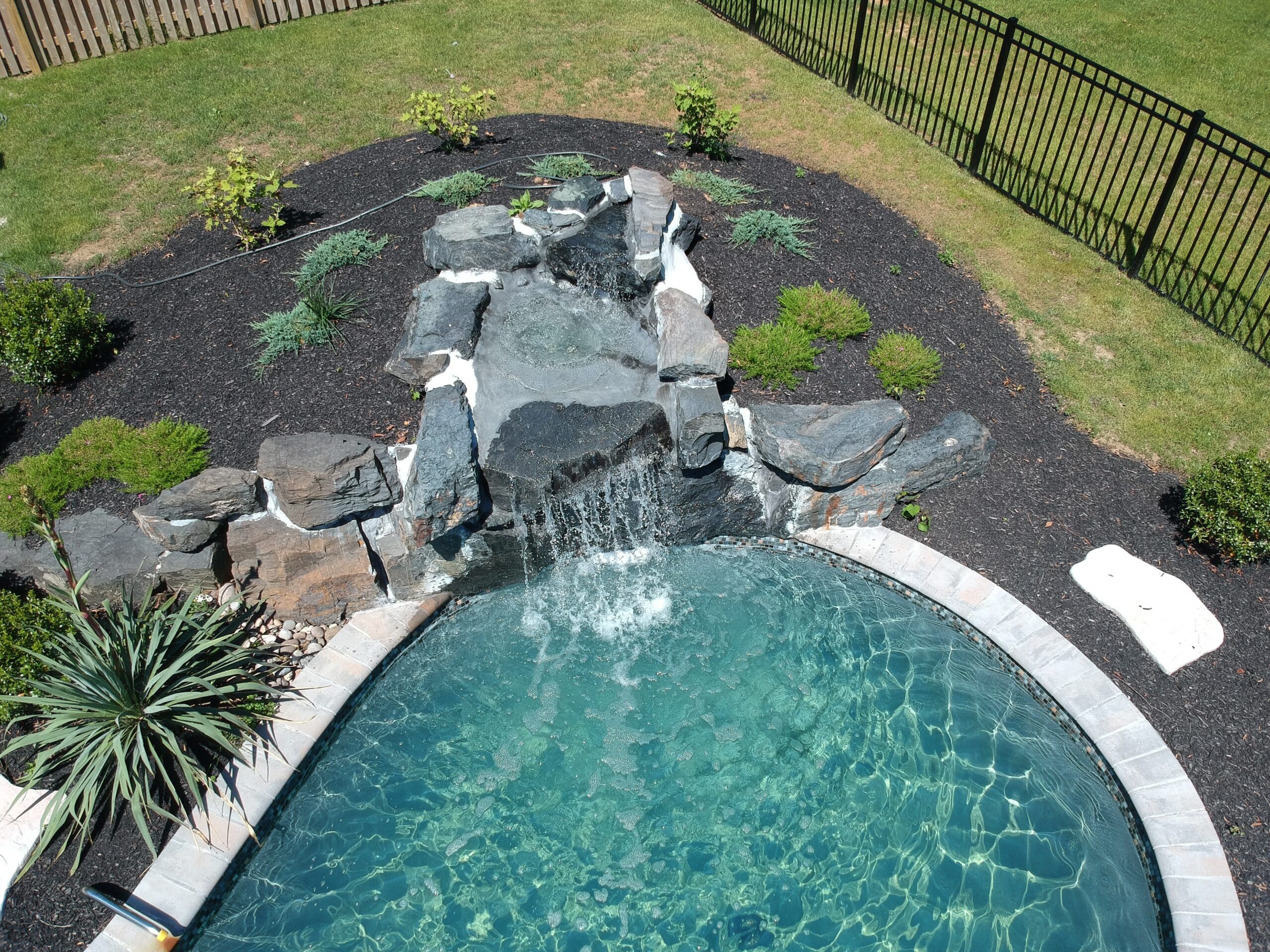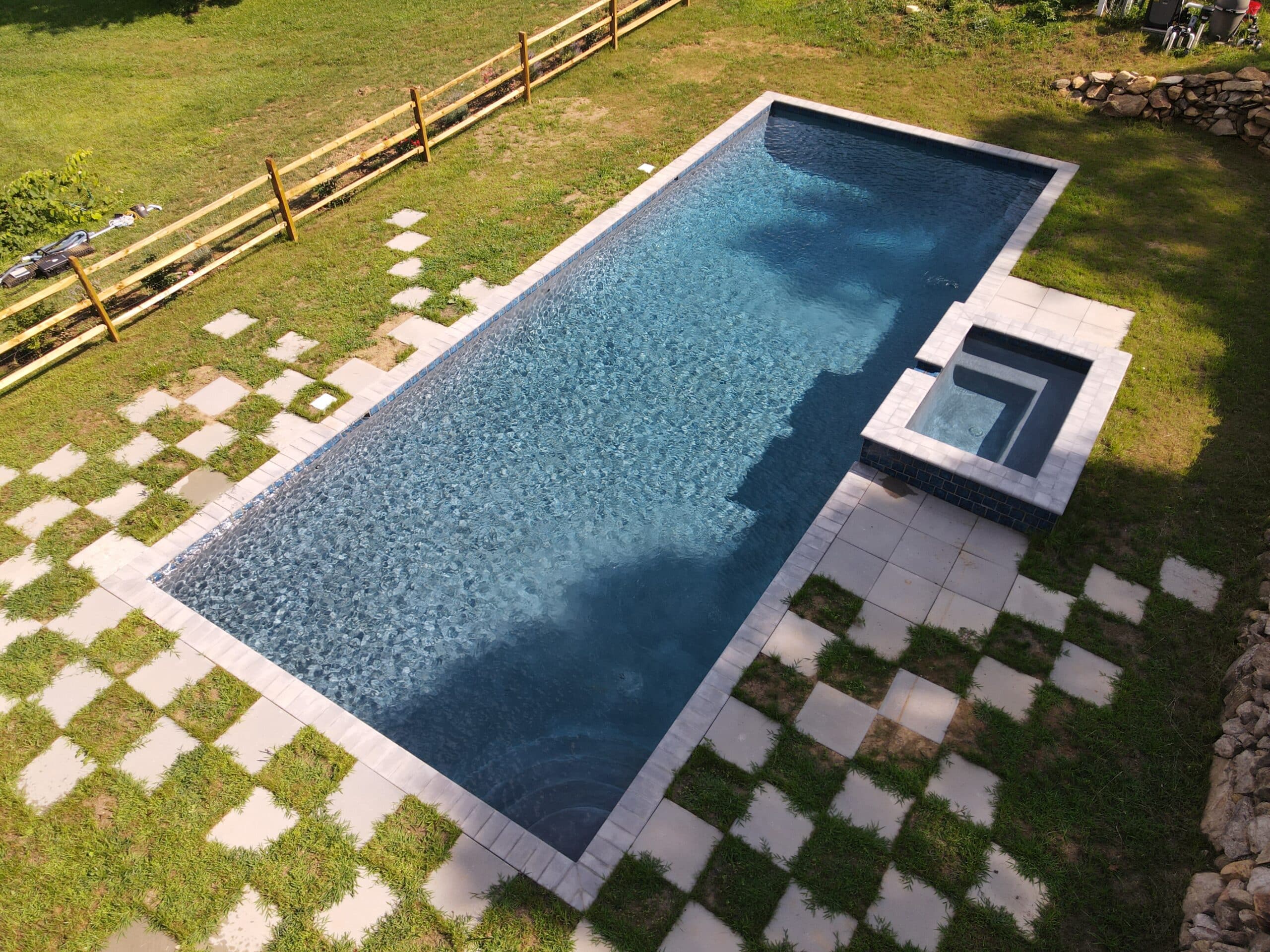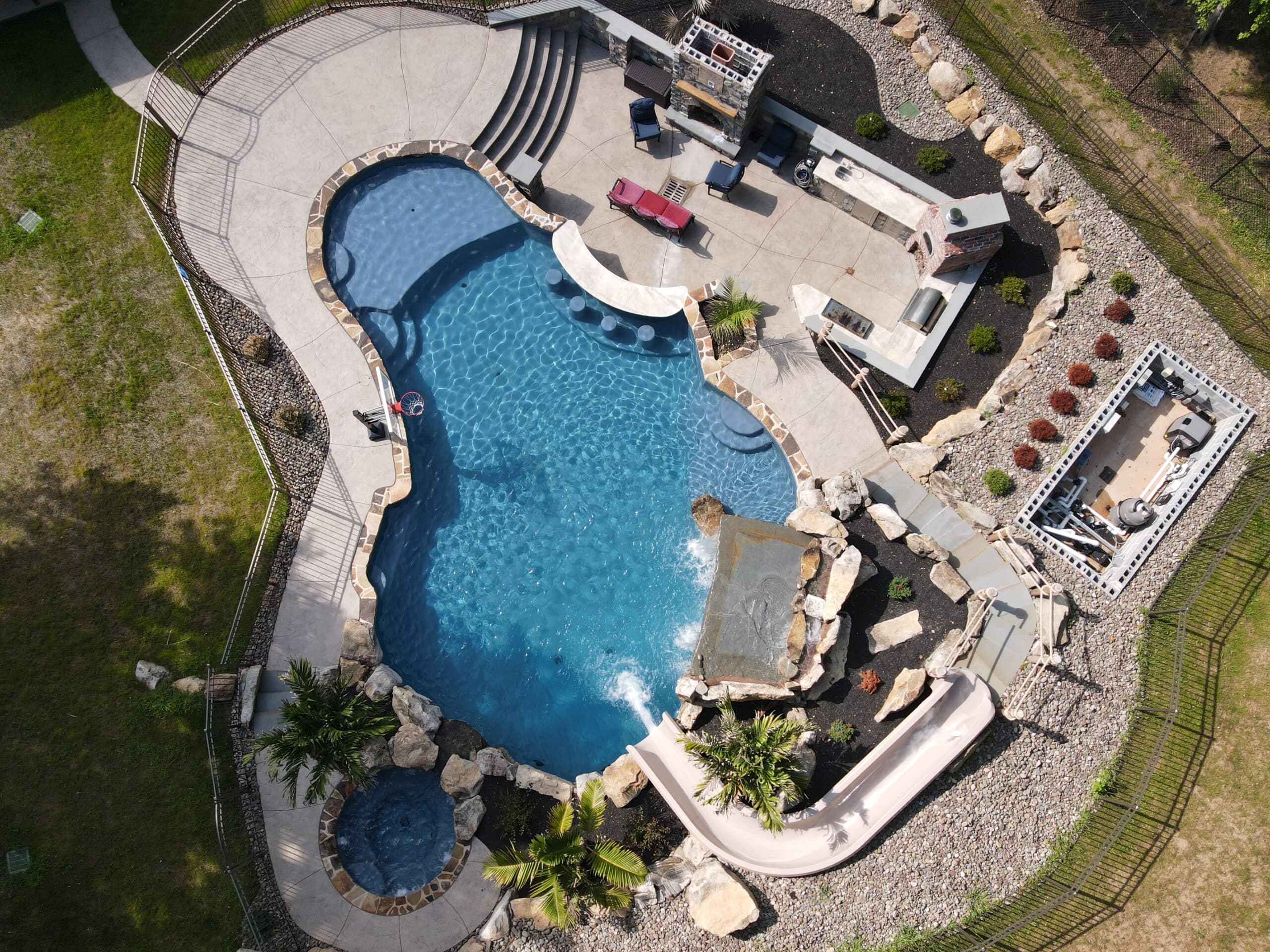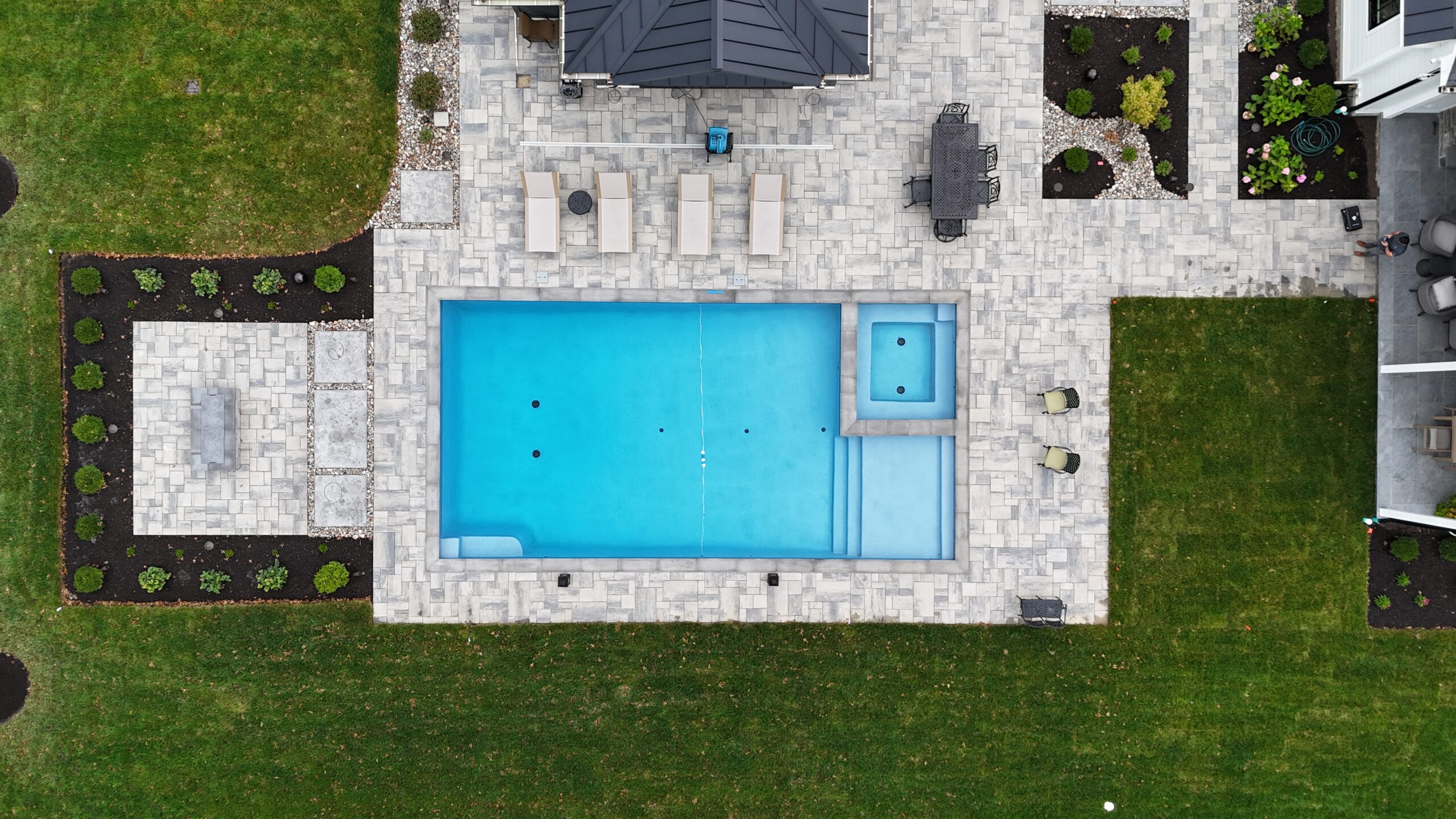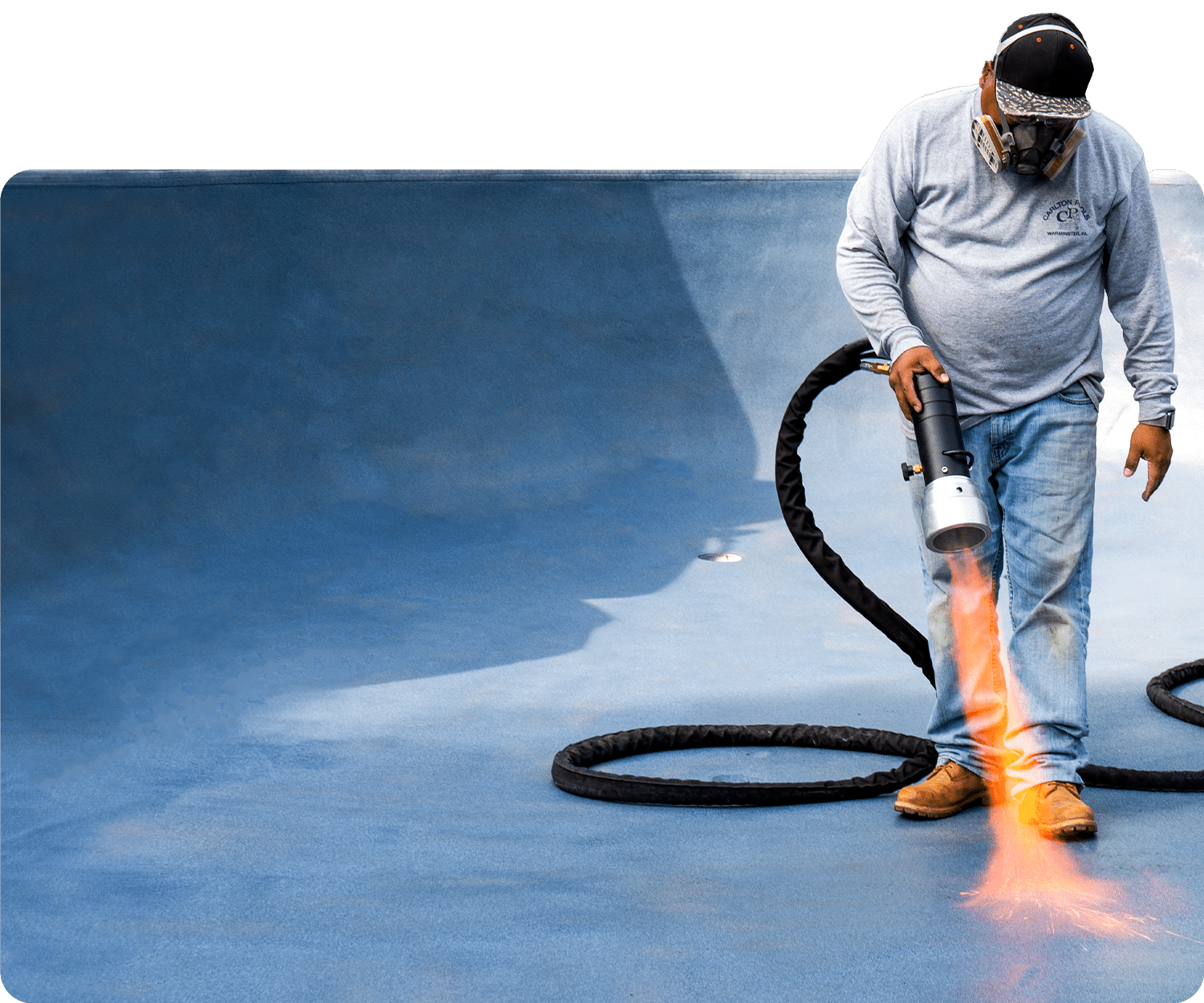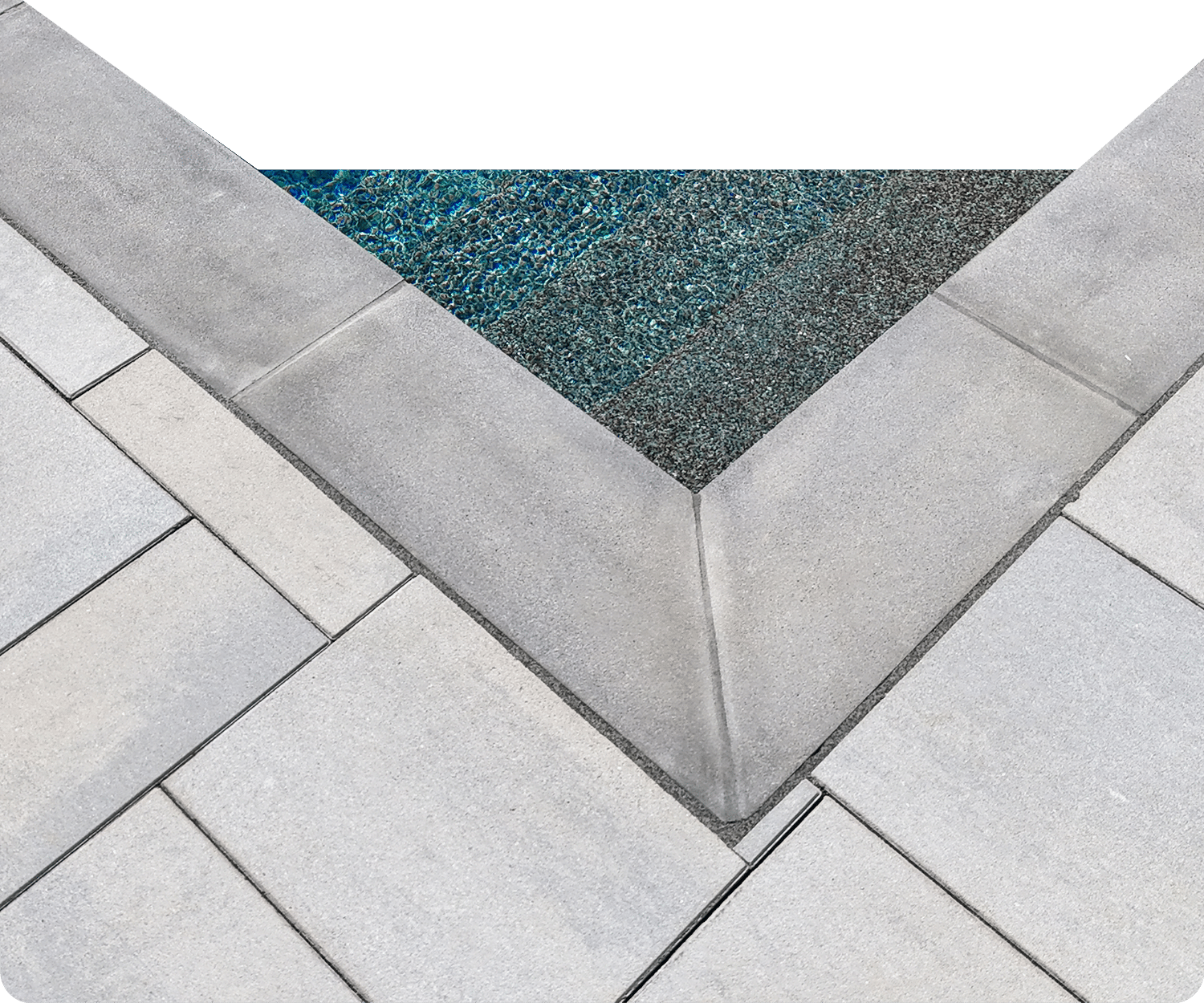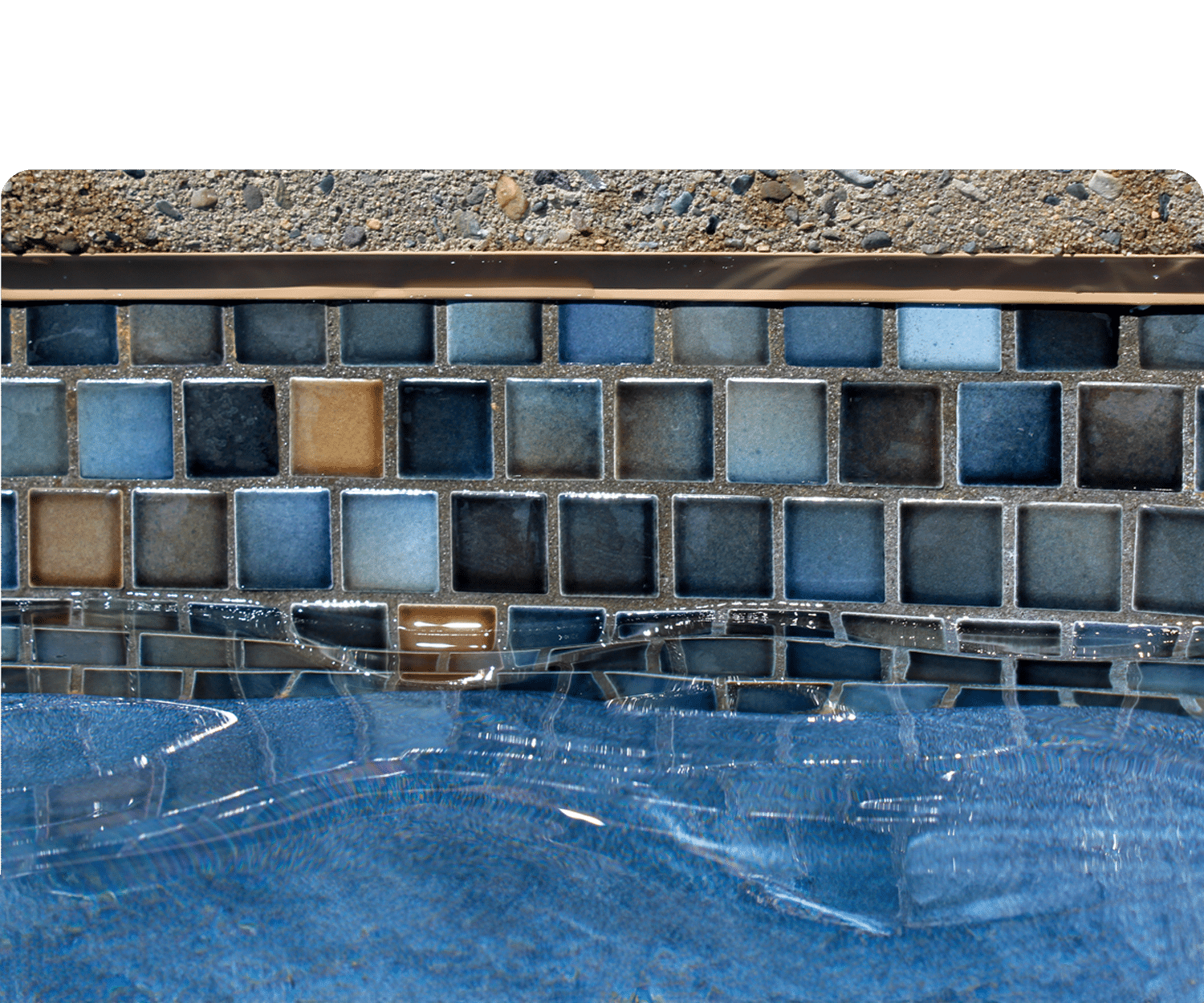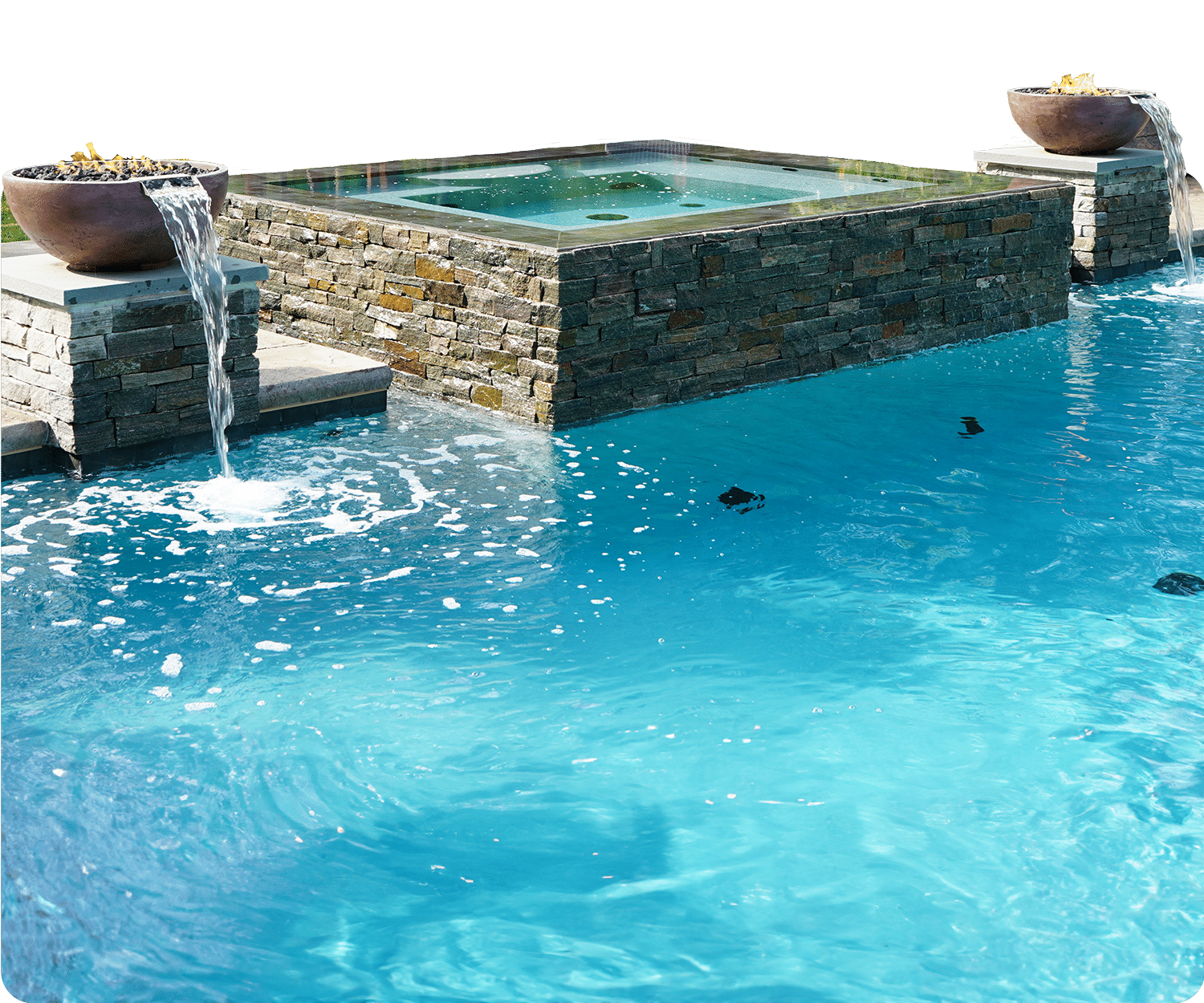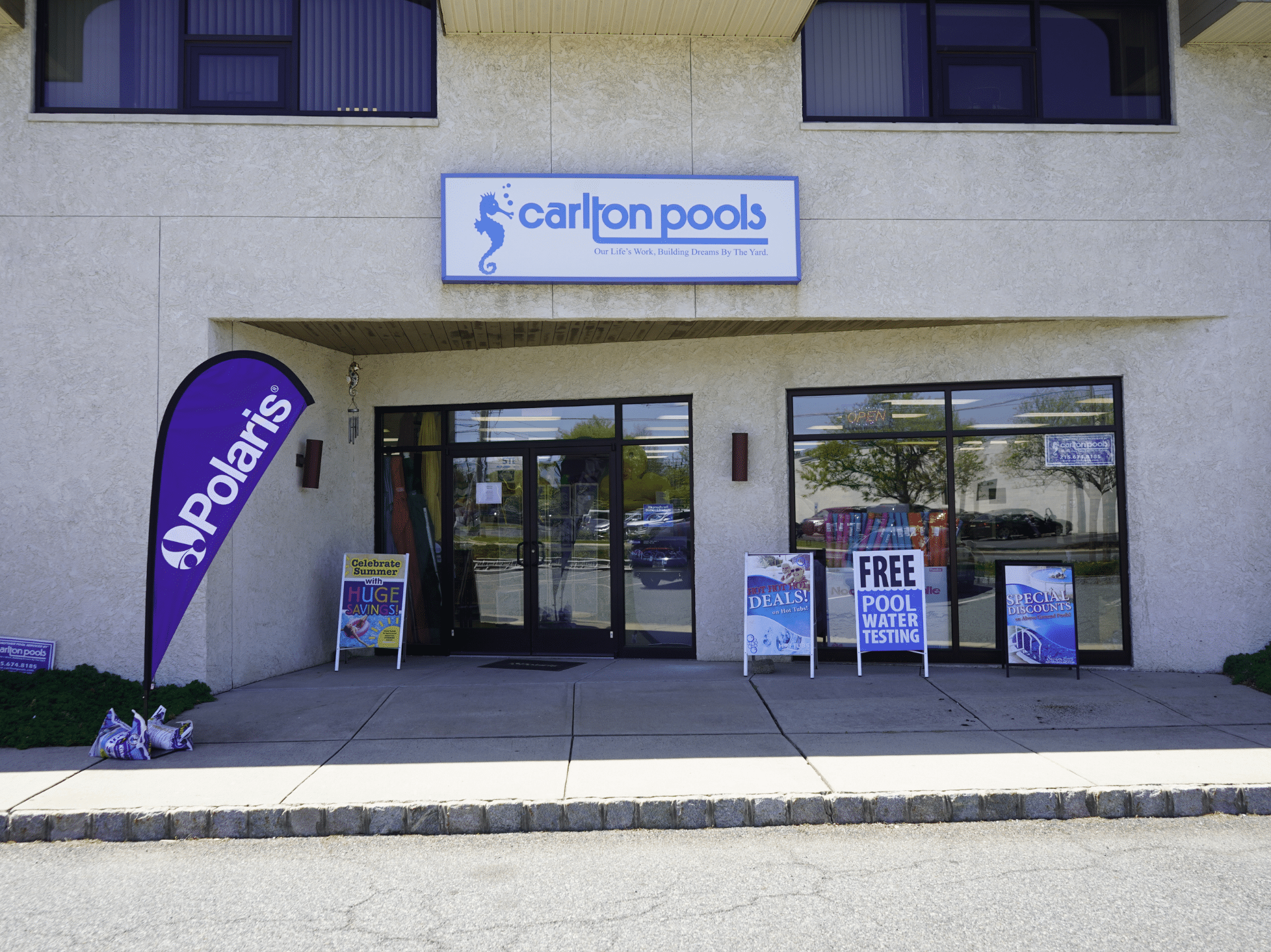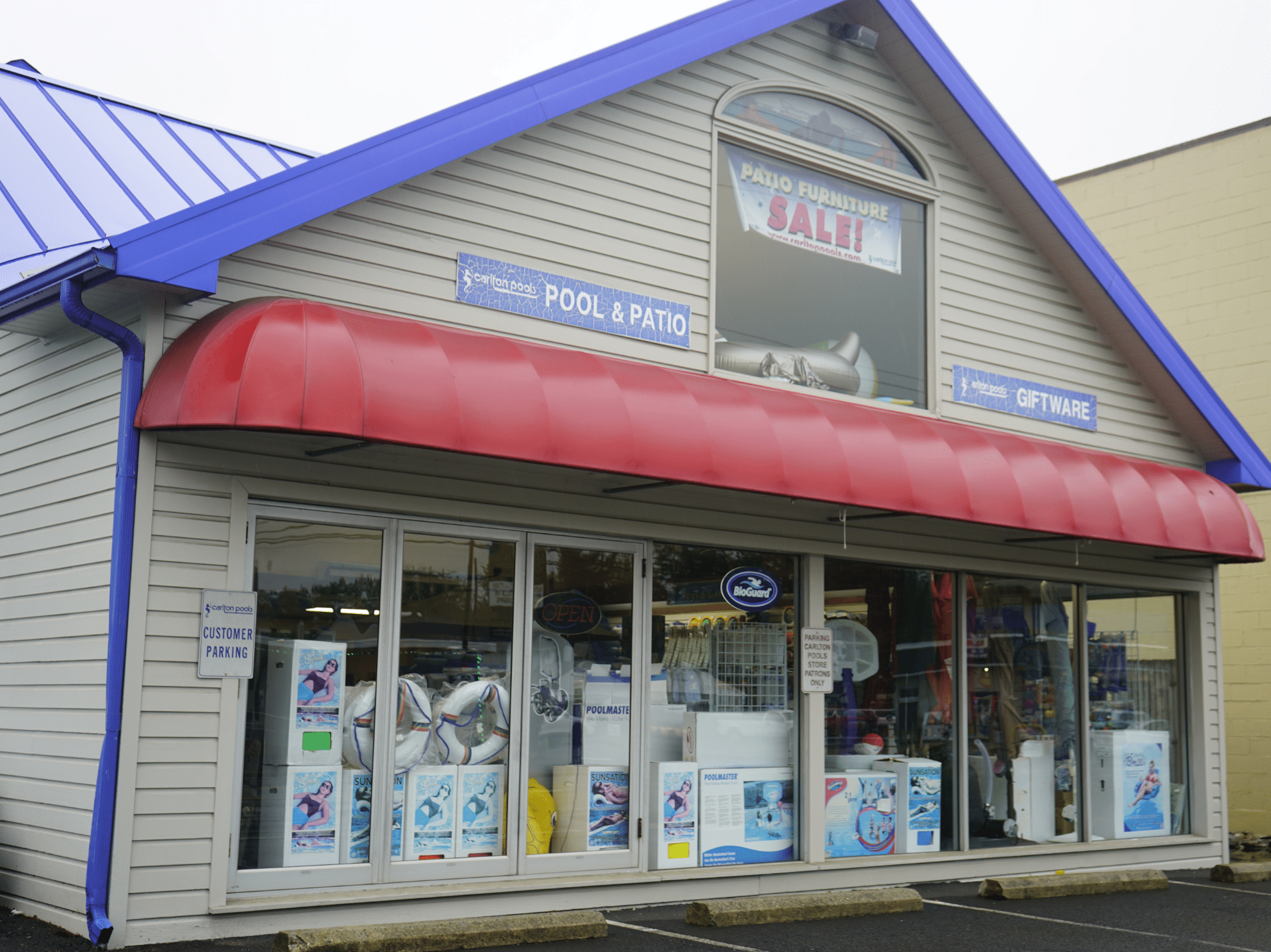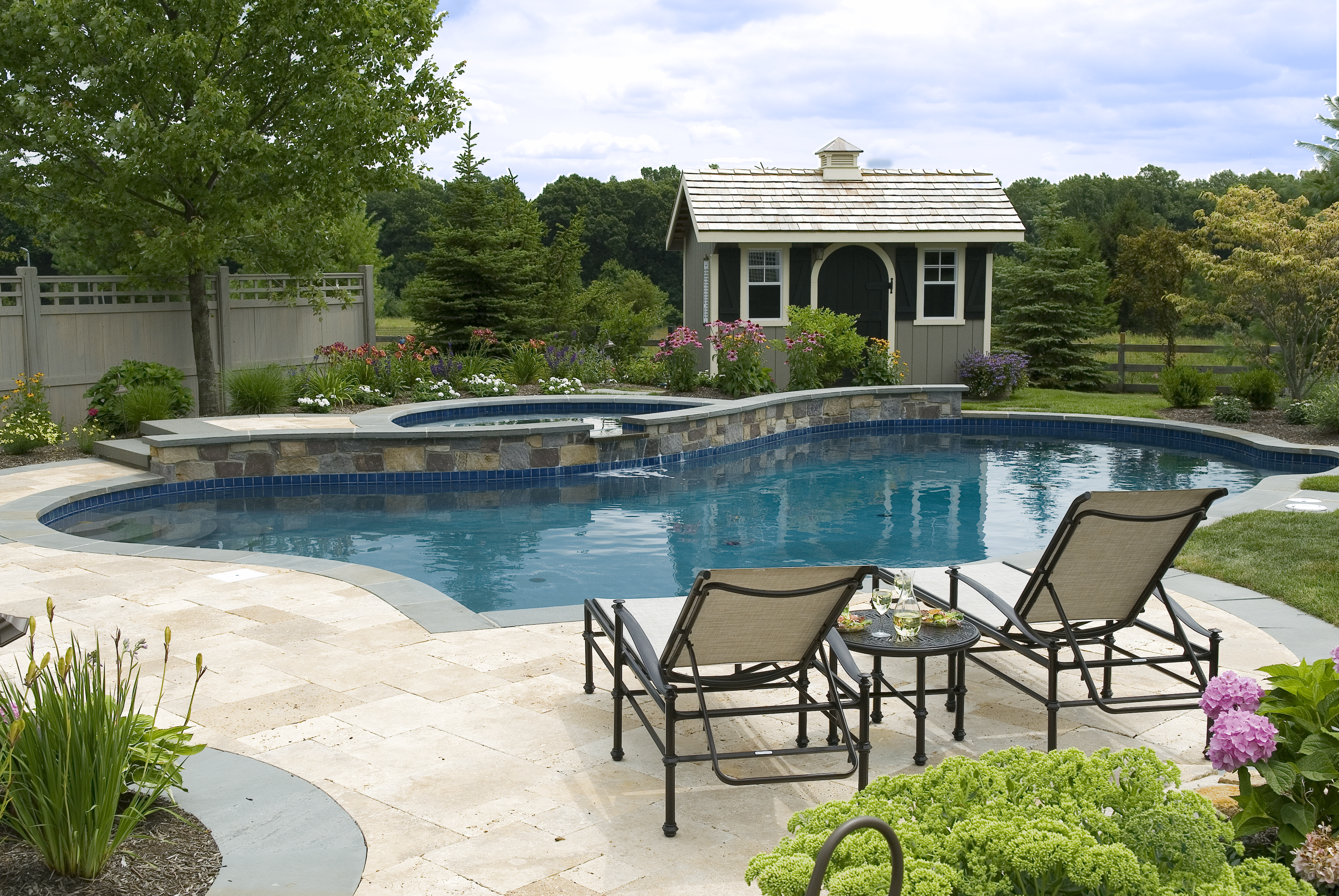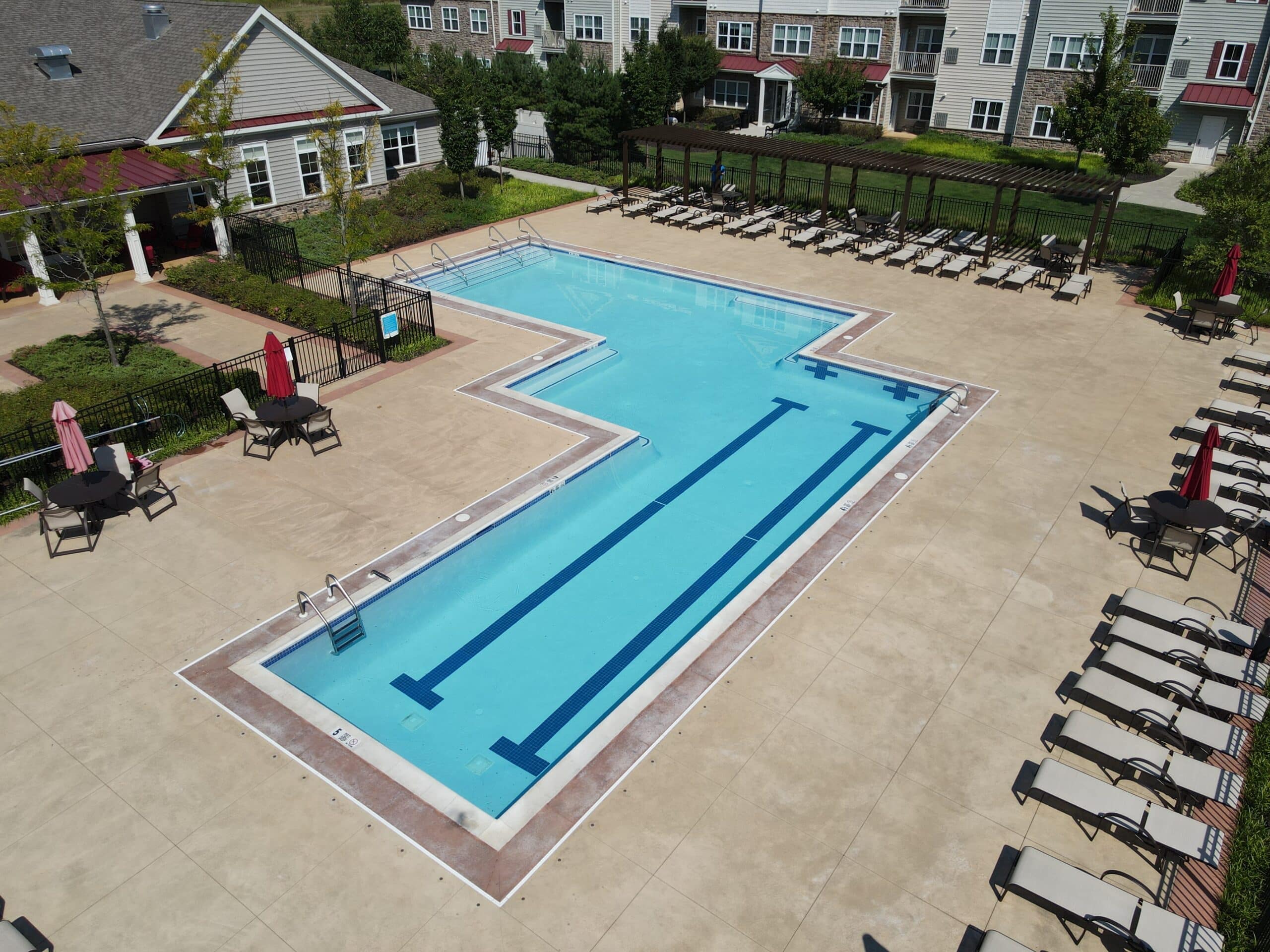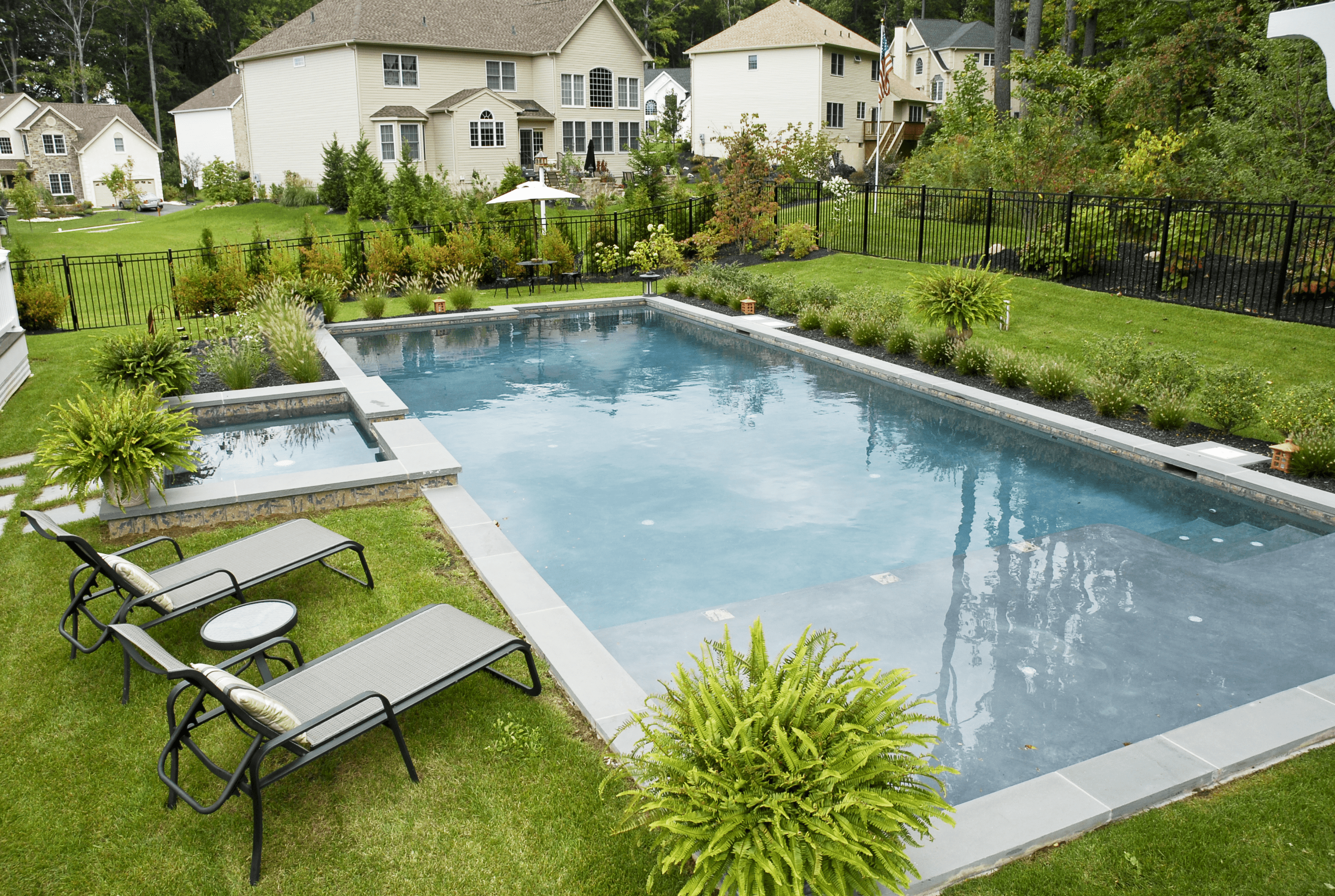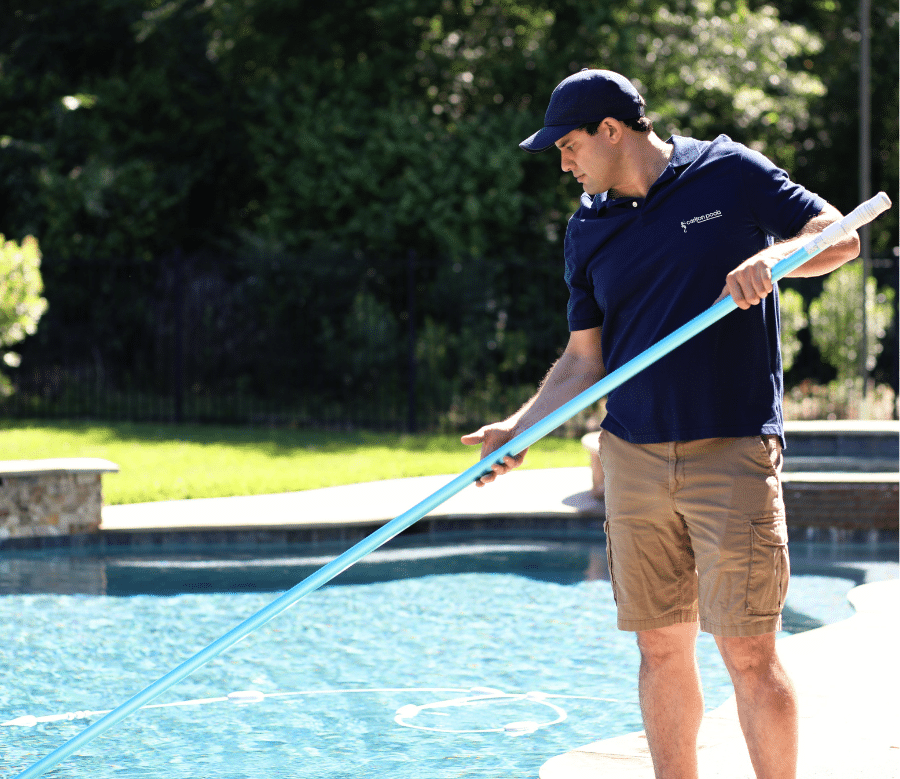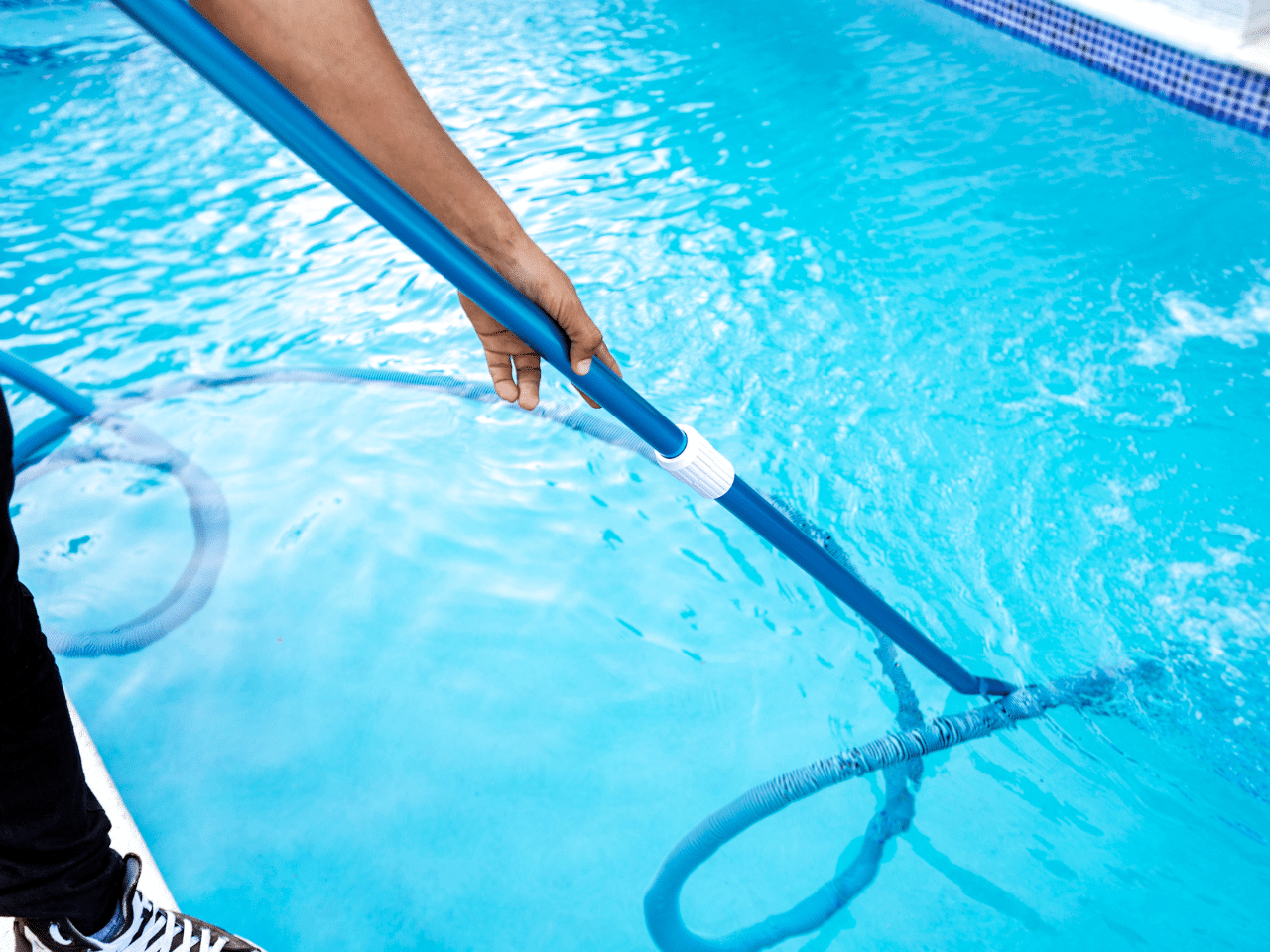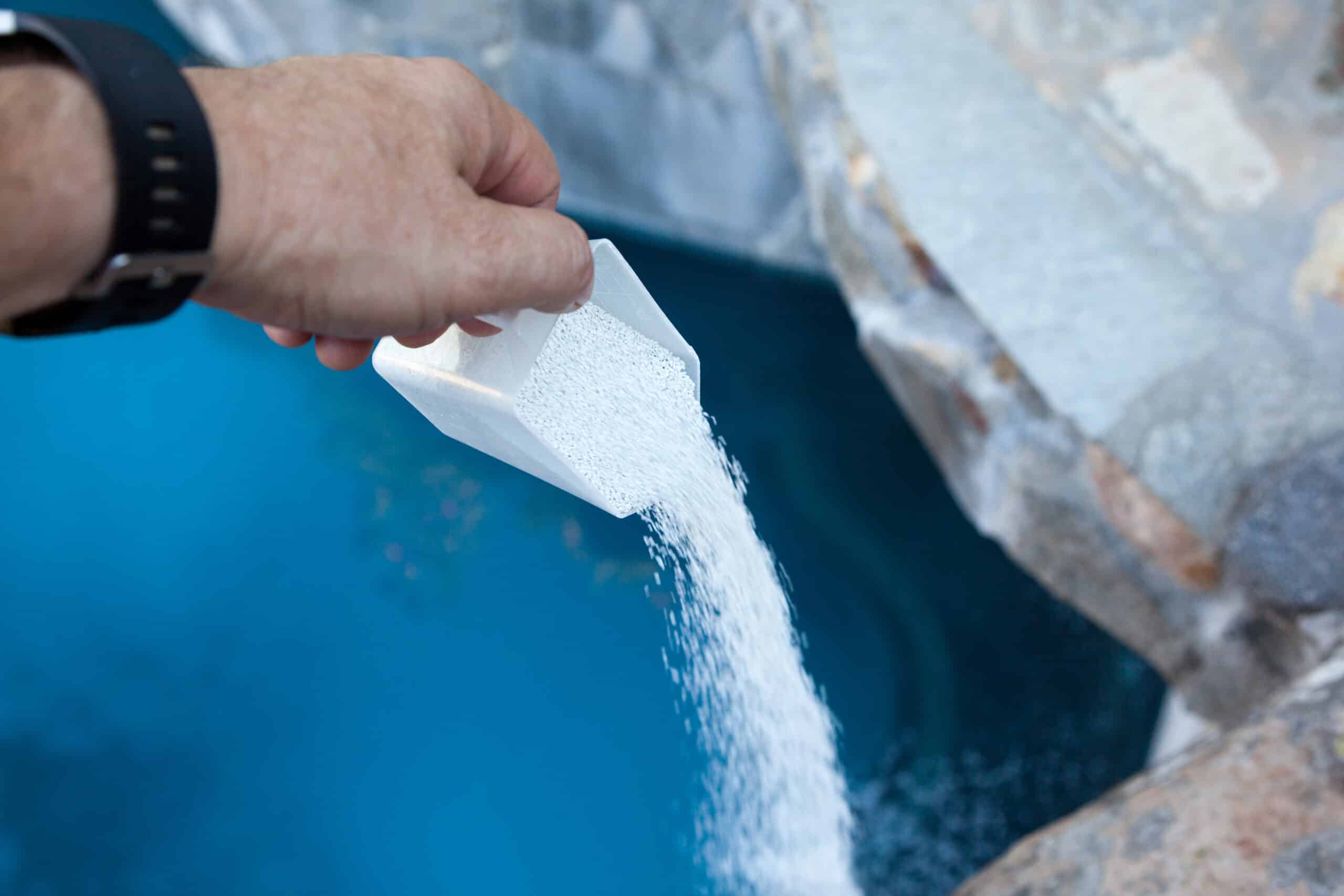
Opening your pool for the season can feel like a big task. You might wonder how much shock you need to add. Our blog will guide you through picking the right amount and how to apply it correctly.
Understanding Pool Shock
Pool shock plays a crucial role in keeping your swimming area clean and safe. It boosts sanitizer levels, making free chlorine available to combat bacteria and ammonia. This process also helps lower combined chlorine, which can irritate skin and eyes.
Regularly shocking your water is part of good swimming area care, especially after lots of rain or hosting a big group of swimmers. Always run your filtration system for several hours post-shock to help clear out contaminants.
Types of Pool Shock
There are different types of pool shock, each with its own characteristics and uses. Understanding these variations can help you choose the right shock for your specific pool needs.
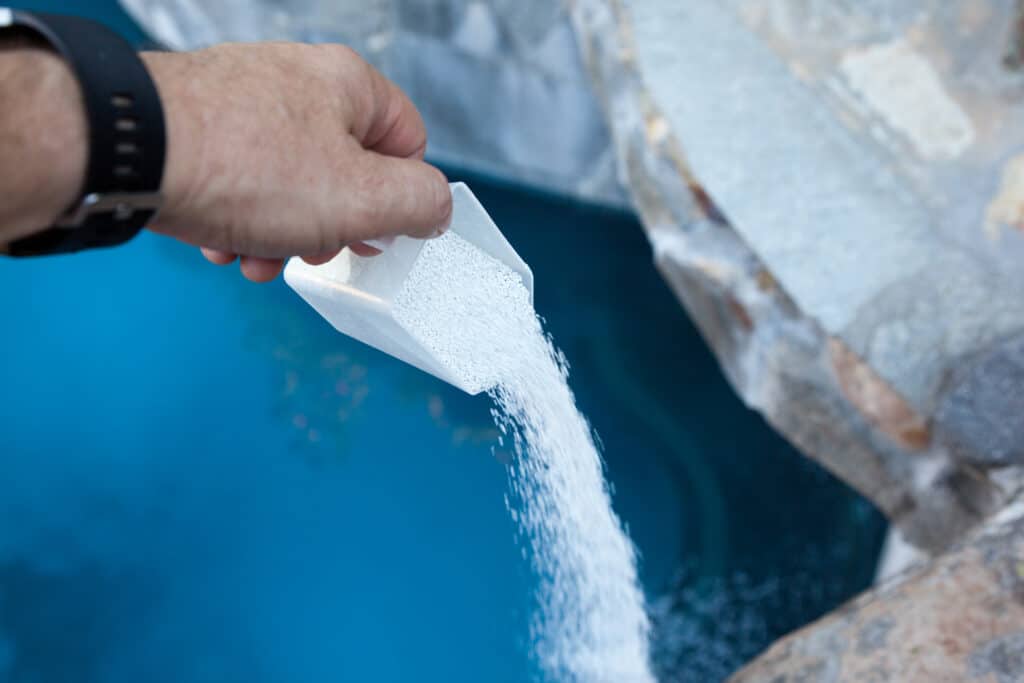
Cal-Hypo Shock (Calcium Hypochlorite)
Cal-Hypo Shock gives your pool a strong chlorine boost at the start of the swimming season. This shock treatment comes in granular form, making it simple to pour directly into pool water.
With its high active chlorine content, Cal-Hypo quickly increases chlorine levels, attacking algae and bacteria efficiently. Before adding it to your swimming basin, make sure you check the size of your basin and how clear or dirty the water is.
Following instructions from the maker ensures you use just the right amount. Getting your basin’s chemistry right plays a big role when using Cal-Hypo Shock for opening.
You need to test and adjust pH and alkalinity before application to make sure everything works as it should. This helps avoid any unwanted reactions like cloudiness or scaling on surfaces that could harm swimmers’ comfort and safety equipment function.
Dichlor Shock (Sodium Dichlor)
Dichlor shock, or sodium dichlor, makes pool water clean and safe by killing germs, green scum, and other bad stuff. It works fast without making the water less acidic. This is good for those who look after pools because they can use it often without worrying about changing the water’s acid levels too much.
This type of pool cleaner also has cyanuric acid (CYA) which protects chlorine from sunlight. That means your swimming area stays cleaner for longer since CYA stops the sun from breaking down the chlorine too quickly.
Non-Chlorine Shock
Non-chlorine shock treatments serve as an alternative for pool upkeep without harsh chemicals. These treatments oxidize and clear out pollutants from the swimming area, making them a softer choice for your skin and eyes.
By eliminating chloramines, these shocks prevent the irritation that often comes with traditional chlorine-based methods. Pool owners choose non-chlorine shock to keep their water sparkling clean while maintaining a comfortable swim environment.
Incorporating non-chlorine shock into regular pool care routines helps balance the water’s chemistry in harmony with other necessary disinfectants. This method works well alongside UV light systems, enhancing the overall cleanliness of your swimming area without compromising on chemical levels.
Perfect for those looking to reduce their reliance on substances like sodium hypochlorite or liquid bleach, non-chlorine shocks offer a gentler yet effective way to fight off contaminants like cryptosporidium or algae blooms, ensuring swimmers enjoy crystal clear and safe water every day.
Determining the Amount of Shock Needed for Your Pool
Determining the amount of shock needed for your pool depends on various factors, including the type and size of the pool. For example, a 10,000-gallon pool requires different amounts of calcium hypochlorite (Cal-Hypo) shock compared to other types such as dichlor or non-chlorine shock.
It’s important to follow package directions carefully to determine the correct amount needed for effective treatment. Additionally, considering breakpoint chlorination levels and regular testing will guide you in determining the appropriate amount for your specific pool size.
The chlorine levels are essential in determining how much shock is needed for a swimming pool. Different sizes and types require different approaches when it comes to ensuring proper chlorination levels are achieved after shocking.
Step-by-Step Guide to Adding Shock to Your Pool
Adding shock to your pool involves testing the water, preparing the shock, and carefully adding it.
First, test your pool water to determine the chlorine level. (You can do this for FREE at one of our retail stores.)
Next, prepare the shock according to the manufacturer’s instructions.
Lastly, add the shock to the water while the pump is running for even distribution.
Testing Your Pool Water
Regularly testing your pool water is crucial for maintaining proper water chemistry and ensuring a safe and clean swimming environment. Testing kits are available to measure the levels of chlorine, pH, alkalinity, and calcium hardness in the pool water.
The ideal chlorine level for a pool is between 1-3 parts per million (ppm), while the pH level should be between 7.2-7.8.
To ensure a safe and inviting swimming environment, it’s important to understand how to test your pool water accurately using appropriate testing kits regularly.
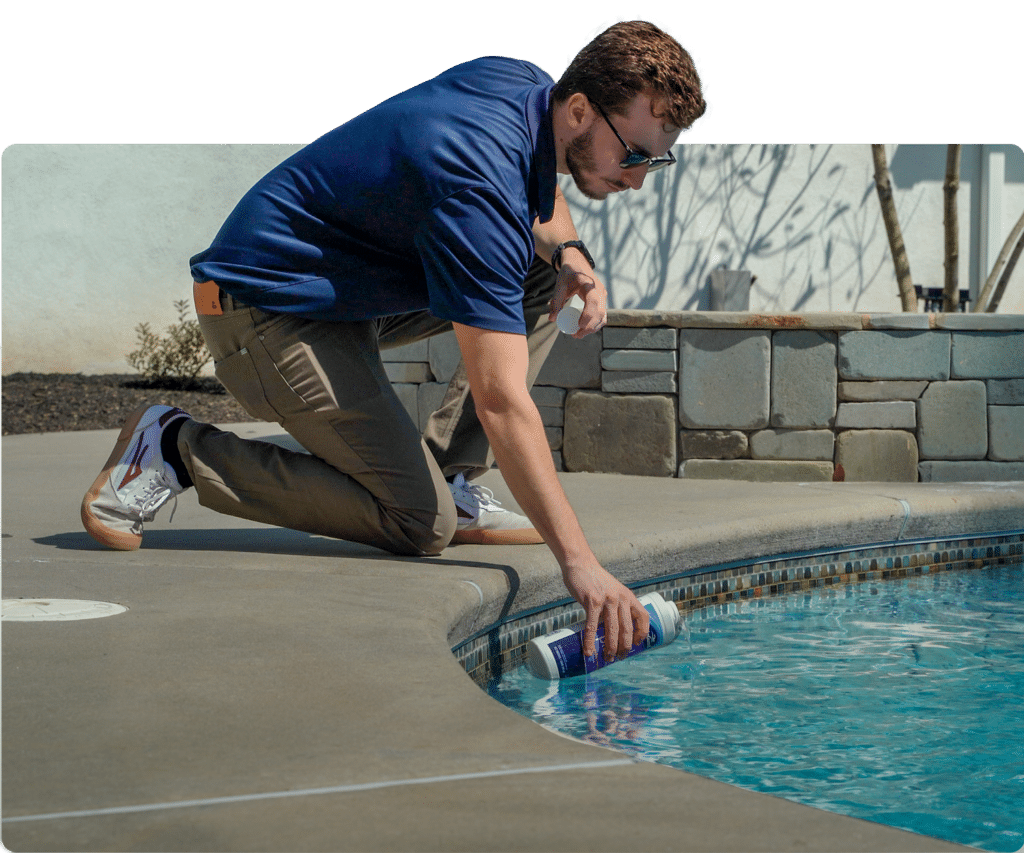
Preparing the Shock
Measure the correct amount of shock needed based on your pool’s size and the type of shock product being used by following the manufacturer’s guidelines.
It is important to handle shock products with care due to their concentrated chlorine content. Always follow safety precautions when handling and storing these chemicals. Avoid direct skin contact and keep them out of reach from children or pets.
Adding Shock to Water
Now that the shock is prepared, it’s time to add it to the water. Carefully pour the pre-mixed shock treatment into the pool while walking around the edges to ensure even distribution.
After pouring the shock into the water in a well-ventilated area, allow it to fully dissolve before turning on the pump or filter. Run the pool pump for at least 8 hours to circulate and distribute the shock evenly throughout the water.
The addition of shock not only helps eliminate contaminants such as chloramines and algae but also ensures a safe and clean swimming environment by killing harmful bacteria. Regularly adding shock is crucial for maintaining optimal pool health, especially after heavy usage or bouts of rain.
Post-Shock Pool Care
Wait Six Hours to Swim After Shocking
It is advised to wait a minimum of six hours after shocking a pool before swimming. This waiting period ensures that the shock chemicals disperse evenly in the water, making it safe for swimmers.
Proper and attentive maintenance is crucial for long-term enjoyment and protection of the pool, ensuring a healthy environment for all.
Run The Pool Pump for Six Hours After Shocking
After shocking your pool, it’s essential to run the pool pump for at least six hours. This will help disperse the shock chemicals evenly throughout the water and clear away dead algae and bacteria.
In cases where you are battling algae, running the pump longer than six hours is advisable to ensure thorough cleaning. Proper filtration through prolonged pump operation is vital to restoring your pool water’s clarity and balance.
Cloudy Pool Water After Shocking
Pool water may remain cloudy after shocking due to dead algae, which can be cleared by vacuuming and running the filter. Consider using a pool clarifier for further improvement. It’s normal for pool shock to take 12 to 24 hours to effectively kill algae.
Once the chlorine levels return to normal, it is safe for swimmers.
Pool Still Green After Shock
After shocking your pool, it may still appear green due to persistent algae growth. This can happen if the shock treatment wasn’t able to completely eliminate the algae or if there are high levels of phosphates in the water.
Algae growth might also persist if there is insufficient filtration and circulation, allowing pockets of algae to thrive. In some cases, residual metals like iron or copper could be causing discoloration as well.
Testing for phosphates and metals can help determine the underlying cause of the green coloration.
To address a green pool after shocking, thorough brushing and vacuuming should be followed by retesting and possibly adjusting chemical levels as needed. If metal content is found to be an issue, using a metal sequestrant can help prevent staining while improving water clarity.
FAQs
Over-shocking a pool can happen, especially with smaller pools. Excessive shock treatments may take longer for the chlorine levels to drop, which could impact when it’s safe to use the pool again and require balancing chemicals.
Different types of shock affect pH levels uniquely—calcium hypochlorite (cal-hypo) shock can raise pH slightly, while non-chlorine shock doesn’t alter pH levels at all.
To effectively shock a 10,000-gallon pool, you will require approximately two pounds of shock to elevate the chlorine level by 5 ppm. Keep in mind that this estimation may fluctuate depending on the specific brand and type of shock you utilize.
After determining the amount of shock needed for your pool and adding it as per the step-by-step guide, you should run the pool filter for a minimum of 6 hours. This duration is essential to ensure that the shock treatment gets evenly circulated and effectively eliminates any contaminants or algae in the water.
If you are dealing with persistent algae issues, running the filter for longer than 6 hours can further enhance the effectiveness of the shock treatment.
Running your pool filter after shocking not only helps in distributing the shock evenly throughout the pool but also aids in clearing out any debris or dead algae that may have accumulated during the shock treatment process.
After shocking a pool, it typically takes 12 to 24 hours for the pool shock to work and effectively kill algae in the water. It’s important to allow sufficient time for the shock treatment to take full effect before assessing the results.
During this period, it is advisable to run the pool filter and pump continuously for at least 6 hours after adding the shock, ensuring that any remaining contaminants are filtered out of the water.
Pool shock works by rapidly elevating chlorine levels in order to combat bacteria and algae. This process helps restore water clarity and balance. Observing these simple guidelines ensures that your pool remains clean, safe, and enjoyable for everyone while also preserving its overall longevity.
Shocking your pool every week is not necessary. Over-shocking can harm your pool and swimmers, so it’s important to test the water chemistry before adding shock to avoid this. Seeking advice from a pool professional ensures proper care for the longevity of your pool.
Proper and attentive maintenance decreases the need for frequent shocking.
Shocking a pool can potentially raise the pH levels if the shock contains a high pH level, although it is not guaranteed. This increase in pH levels can lead to cloudy water and reduce the effectiveness of the shock treatment.
Therefore, it’s important to test the pool water after shocking and adjust as needed to maintain balanced pH levels.
By adjusting for balanced pH levels, you can prevent issues such as cloudiness and ensure that your shock treatment effectively keeps your pool clean and safe for swimming.
Yes, you can use bleach or liquid chlorine to shock your pool. It’s important to calculate the correct amount of liquid chlorine needed based on the pool’s volume and current chlorine level.
Follow the manufacturer’s instructions and safety precautions when using these products for pool shock. Shocking a pool with liquid chlorine or bleach can help eliminate organic contaminants and bacteria, as well as restore chlorine levels for effective sanitization.
Conclusion
Determining the right amount of pool shock is essential for a clean and safe swimming environment. The type of shock, pool size, and any existing issues like algae play a role in this decision-making process.
Whether it’s routine maintenance or dealing with contaminants, understanding how much shock to open your pool will ensure optimal results. From testing water quality to adding the appropriate dose of shock and following up with post-shock care measures, maintaining your pool’s health requires attention to detail but pays off in the long run.
For those seeking professional assistance with pool maintenance and shock treatments, Carlton Pools can provide expert guidance and support to ensure your pool is in top condition for the swimming season. With the right care and attention, you can enjoy a sparkling clean pool all season long.

